The Aftermath of a Farm Truck Crash: Lawsuits, Settlements, and Court Proceedings
RESOURCES - PUBLICATIONS
The Aftermath of a Farm Truck Crash: Lawsuits, Settlements, and Court Proceedings
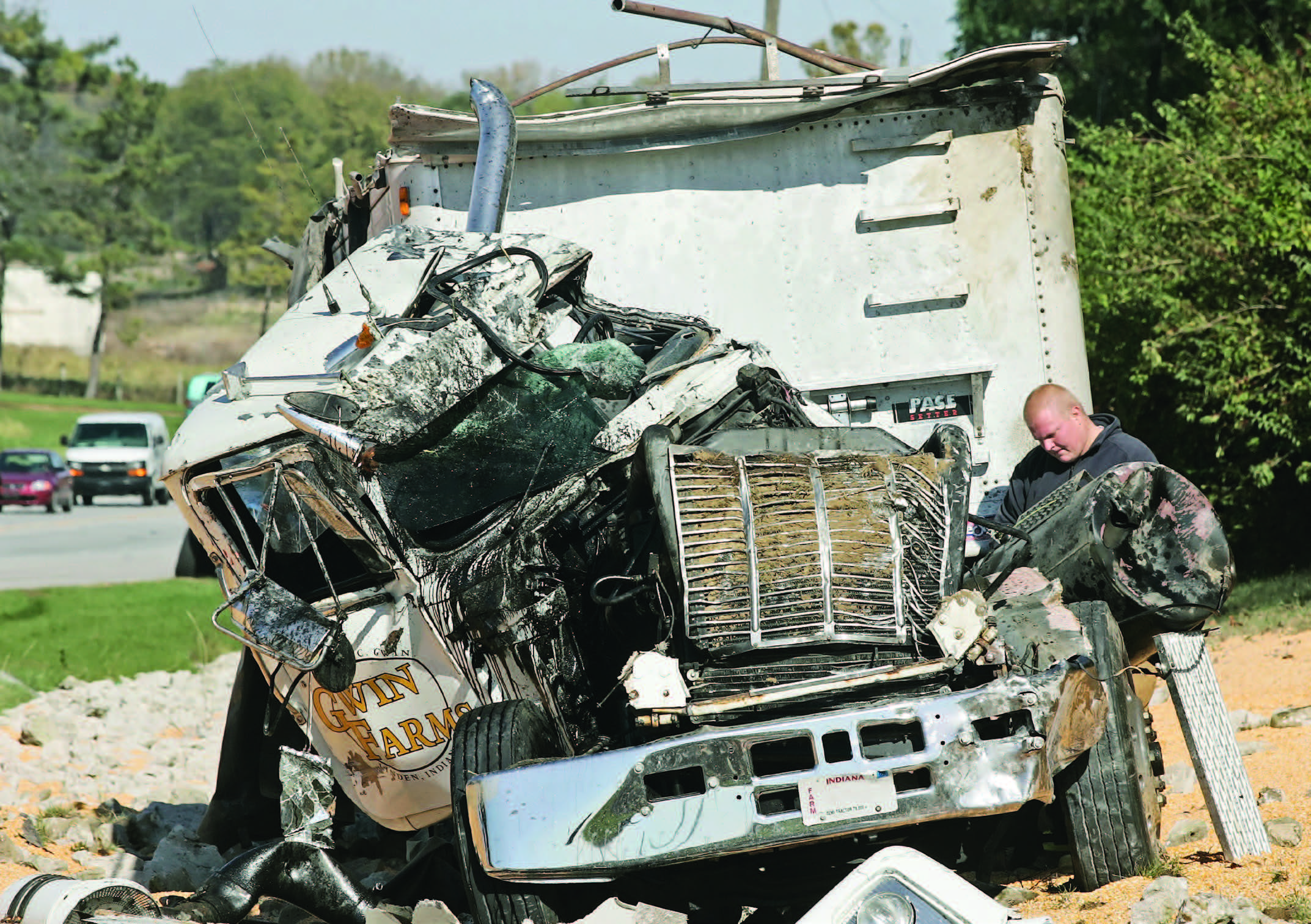
Authors
Fred Whitford, Coordinator, Purdue Pesticide Programs
Brian Drummy, Attorney, Bunger & Robertson
Jim Schrier, Attorney, Reiling, Teder, & Schrier, LLC
David Gunter, Attorney, Dean Mead
Donya Lester, Executive Secretary, Purdue Agricultural Alumni Association and Farm Wife
Kevin Leigh Smith, Editor, Purdue Agricultural Communication
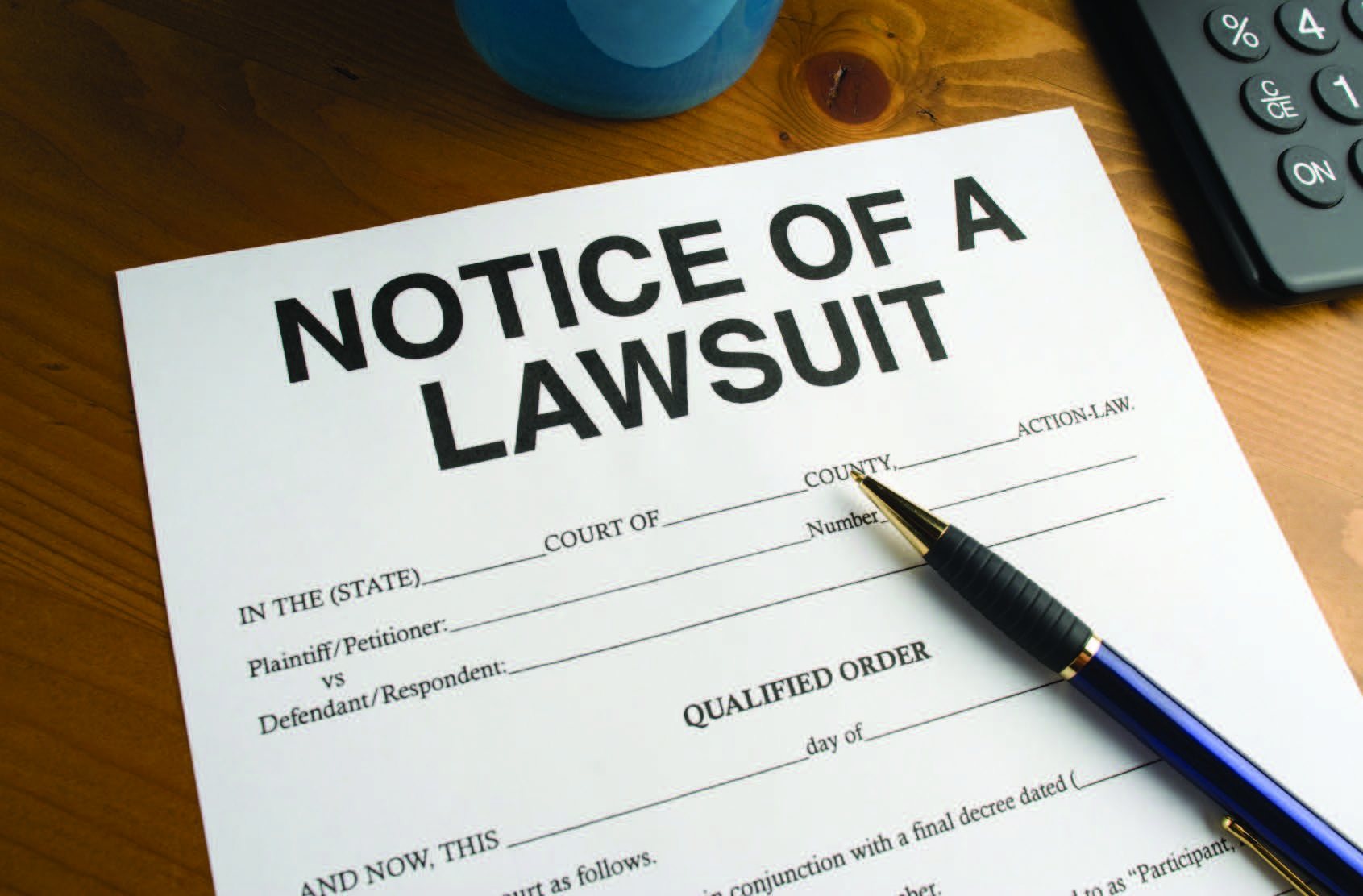
The Unexpected and Unwanted Call
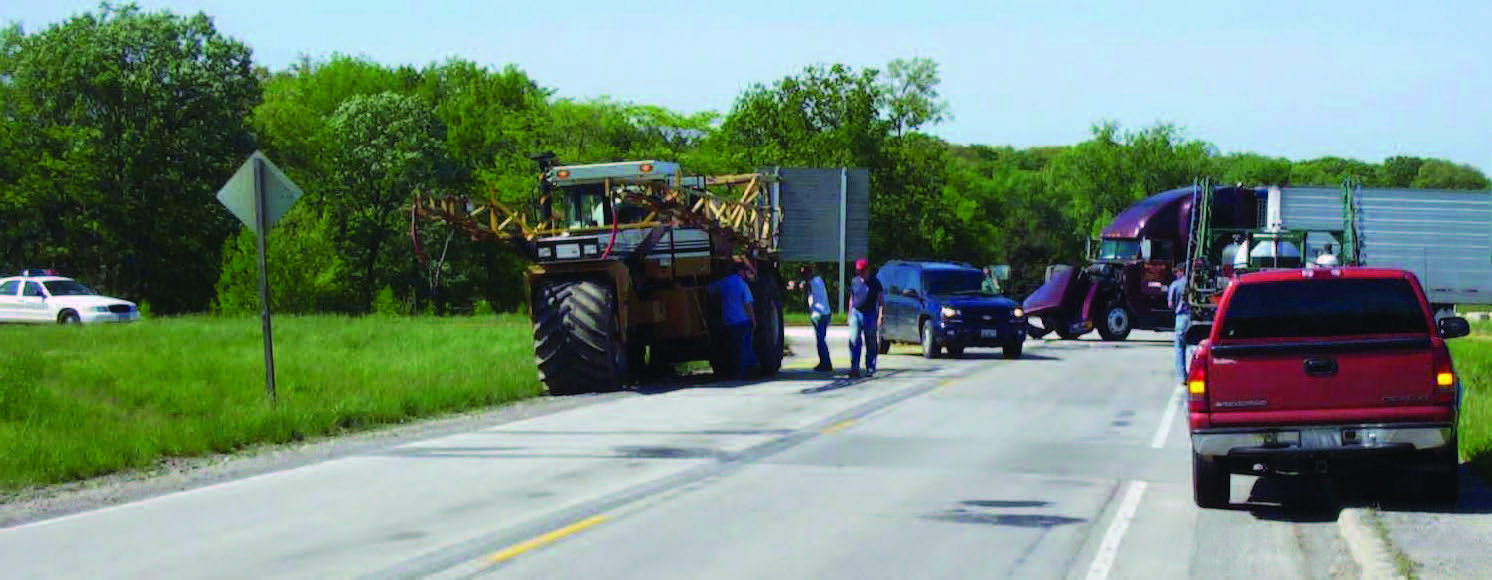
Many traffic incidents can be settled amicably. However, differences of opinions as to who did what to whom can lead to protracted and complicated legal proceedings.
Nobody wants to get a call like this. “Your truck was involved in a serious crash at the intersection of 24 and 48. Your truck ran through the intersection, broadsiding a car on the driver’s side. The rescue team is trying to get the driver out of her car, but it doesn’t look good.
The passenger is being airlifted to the hospital. Your driver is only shaken and not injured.” The weather forecast and crop prices are insignificant as you realize your truck and driver may have caused someone’s death. What if the situation were reversed and the car failed to stop? Your truck still hit the car and killed the driver. And while your driver is not at fault, you may still find yourself in legal proceedings that could last for several years.
This publication provides insights into what to do after one of your trucks, tractors, or agricultural implements is involved in a crash or collision. This guide will describe the legal process, settlements, and court proceedings. A companion publication — Farm Truck Accidents: Considering Your Liability Management Options (Purdue Extension publication PPP-91, available from the Education Store, www.theeducation- store.com) describes the steps you can take to prevent crashes and be better positioned in the event that you find yourself or your business named as a party in a legal proceeding.
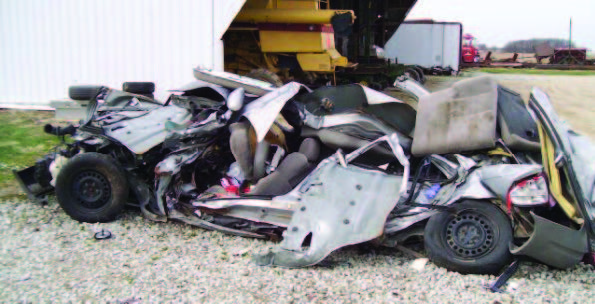 Crashes can have tragic consequences both when they happen and for years after as lawsuits work through the legal system.
Crashes can have tragic consequences both when they happen and for years after as lawsuits work through the legal system. 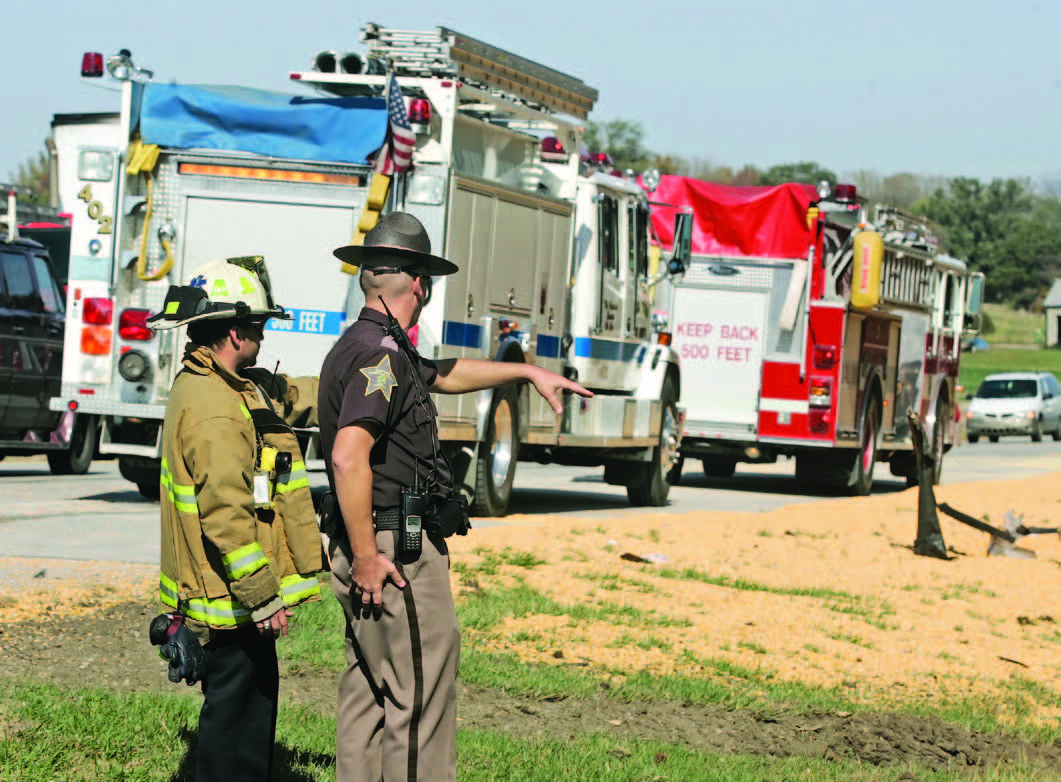 Regardless of who is at fault, life-altering injuries and loss of life affect everyone involved, from the victims and drivers to the families to emergency personnel.
Regardless of who is at fault, life-altering injuries and loss of life affect everyone involved, from the victims and drivers to the families to emergency personnel. The Aftermath of a Farm Truck Crash
Since crashes will always happen, lawsuits are a fact of life. In the following story, think of the predicament the grower faced when one of his drivers was involved in a collision that lead to the death of a young woman.
“My driver was leaving the field loaded with grain to one of our elevators. He saw a car stop at an intersection. He was startled when the driver pulled out in front of him, and he quickly veered to his left to miss her. Unfortunately, the truck still T-boned the car. The 17-year-old girl driving the car was instantly killed. Her dad, who was a passenger, survived the accident. Our driver was not hurt, but he was emotionally shaken and continues to be affected by the accident.
“My driver called me about the accident. I went to the site, which was only a few miles away. When I got there, the police had not yet arrived, but others were already there doing what they could to help. When the police arrived, they asked for all of my information including my insurance. They impounded the truck and took it to a local shop. It was under lock and key for a day. The DOT officer came the next day to inspect the truck and trailer from one end to the next. They found one infraction with my truck — the brakes were out of adjustment.
“My truck was totaled in the accident. The father owned the car, but he did not have enough insurance to cover all of the damage to my truck. Therefore, my insurance company paid for my truck and trailer. I still had a week and a half of harvest left to complete, and the accident eliminated my only truck. “Our driver did not have a DOT medical card at the time of the accident. After they checked him for serious injuries at the scene, the police took him to the local hospital. They ordered a drug and alcohol screen on him. Fortunately, it turned out ‘negative.’
“One year after the accident, the father filed a lawsuit claiming that we had contributed to the wrongful death of his daughter. The lawyers began investigating the accident further and requested extremely detailed information about the truck and our business. I can’t even begin to explain how detailed the information was that they requested. Three different accident reconstructionists were hired by both sides. One of the deconstructionist concluded that our driver was driving over the speed limit even though the other driver pulled out in front of our truck.
They were trying to make us partially responsible by suggesting that had our driver not been speeding, he would have been able to stop in ample time to avoid the accident. “We had to answer countless questions, sit through depositions, and produce hundreds of documents along the way. The deposition process was horrible. The thing that amazed me was the way they brought up things like truck laws. They wanted all of my records from previous years, and they subpoenaed the shop that performed all of the work on my trucks to obtain any records associated with those vehicles.

Saying something at a deposition is no different than saying it in court. Your words become evidence for one side or the other.
“I learned that you had better keep all of your records. My problem was that, although I thought I had all of the DOT inspections performed, I had not saved my inspection forms. The lawyers questioned me thoroughly about my inability to provide written proof that my trucks were safe. “They also requested all the maintenance records on my trucks for work that I had performed on my own. My attitude was: if something needed fixing, it was fixed. Yet, I still had to locate all the records for all the maintenance that had ever been done on the truck, regardless of who did so.
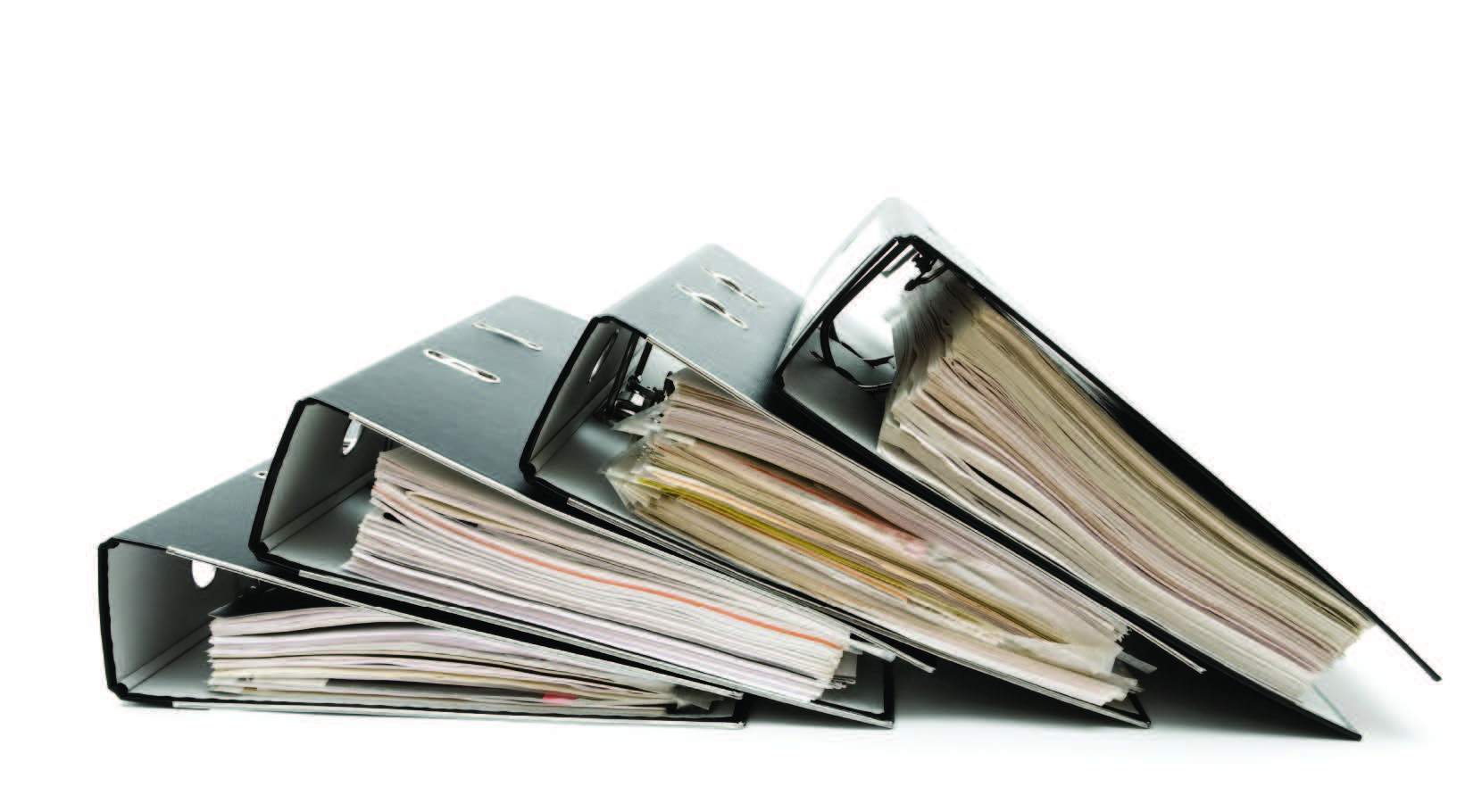
“At the time, my cousin and I were working as partners. The lawyers even threatened to drag my wife into the case. They were also talking about suing my dad and uncle because it was their grain that my truck was hauling. It was a nightmare. I wouldn’t wish this on my worst enemy.
“After more than two years, our insurance carrier was finally able to settle the case out of court. While farmers are not often thought of as ‘cash rich,’ they often have lots of other assets — such as land, equipment, and even the grain in their elevators. A judgment from a lawsuit could be levied against these assets in the event that there is not adequate insurance coverage to protect these assets. “The terms of the settlement agreement prohibit me from disclosing the details. However, I can say they went well above the primary liability limits of my policy. They originally were trying to get more than three times my policy limits. Fortunately, our umbrella policy covered the additional liability exposure.
“To those reading this publication: if you do not have a good insurance agent, you may be fooling yourself into thinking that you are fully insured. I’m very fortunate that my agent talked me into getting the umbrella policy. The umbrella does not cost that much more, and it’s well worth it — as my situation shows. When we first talked about an umbrella, we were not sure about it. We had our regular policy and we thought it was adequate. We ended up getting the umbrella and are thankful that we did. You can save a dollar today, but a bad result might cost you your farm tomorrow.
It’s fine to save money, but when you get into situations like mine, this is not the area to cut corners. “Today, our truck and all our farm equipment are part of a separate corporation in order to separate our farm liability from our personal liability. This situation has demonstrated to me the importance of knowing and following the rules: document any and all safety measures, and do your best to be prepared should you or one of your employees be involved in an accident. If you find yourself named as a defendant in a lawsuit and you have not taken the appropriate steps beforehand, then everything you have worked for can be lost in a moment.”
This was a tragic situation for everyone involved. But this is a useful example that shows what can happen if you or one of your drivers is involved in a serious crash. You cannot always prevent such incidents, but you can prepare yourself and your operations for such tragedies.
If you or one of your drivers is ever in a crash, there are four things you ought to do:
1. Notify law enforcement.
2. Notify your insurance carrier.
3. Test drivers for drugs and alcohol.
4. Record your thoughts while the details are fresh.
Following these procedures could be critically important if a claim is made or someone files a lawsuit against you at some future time. These procedures will also put you in the best position to assist your attorneys in handling your case.
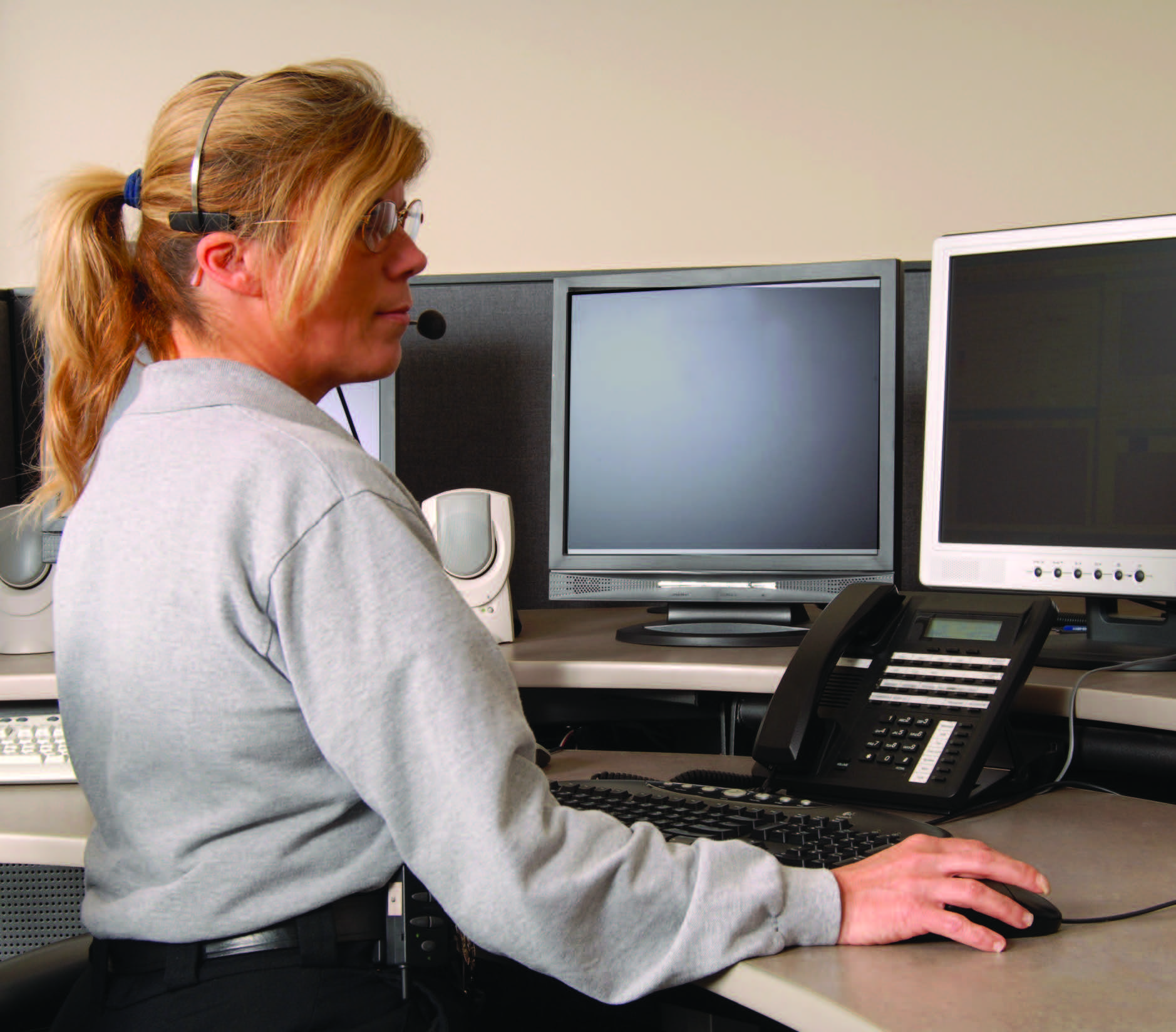
No crash is too minor to report to the police.
Call Law Enforcement After Any Crash
Involve the police immediately after any crash so they can collect the facts and critical information. It’s easy to convince yourself not to call the police when you rear-end someone, and the other driver says, “I think I’m OK. Let’s just exchange information and go on our way.” A week later, however, you could receive an unexpected call on behalf of a driver who is now in traction and suffering from back injuries as a result of the crash.
If you do not call the police, it’s going to be your word against somebody else’s as to what actually happened. Any time there is a crash - no matter how minor — you should call the police to make a record of the facts noted on the day of the incident.
The law enforcement professional who responds to an incident typically records basic information regardless of death, personal injury, or property damage. The professional must investigate the facts surrounding the crash and determine who, if anyone, should be ticketed and who he or she believes is at fault for the crash.
Any crash that involves a fatality or catastrophic injury will result in an investigation that is far more extensive and detailed. In these serious incidents the investigating officer(s) will strive to make sure not to overlook anything important. Every critical fact must be examined from all perspectives.
The investigating officer knows from experience that serious cases will frequently involve depositions and court proceedings. This means the investigating officer may be called upon to testify under oath about his or her investigation and observations. Recording the facts accurately at the time of the crash is critically important — especially when there is a serious injury or death. The scene of a fatal crash usually is handled as carefully as a crime scene.
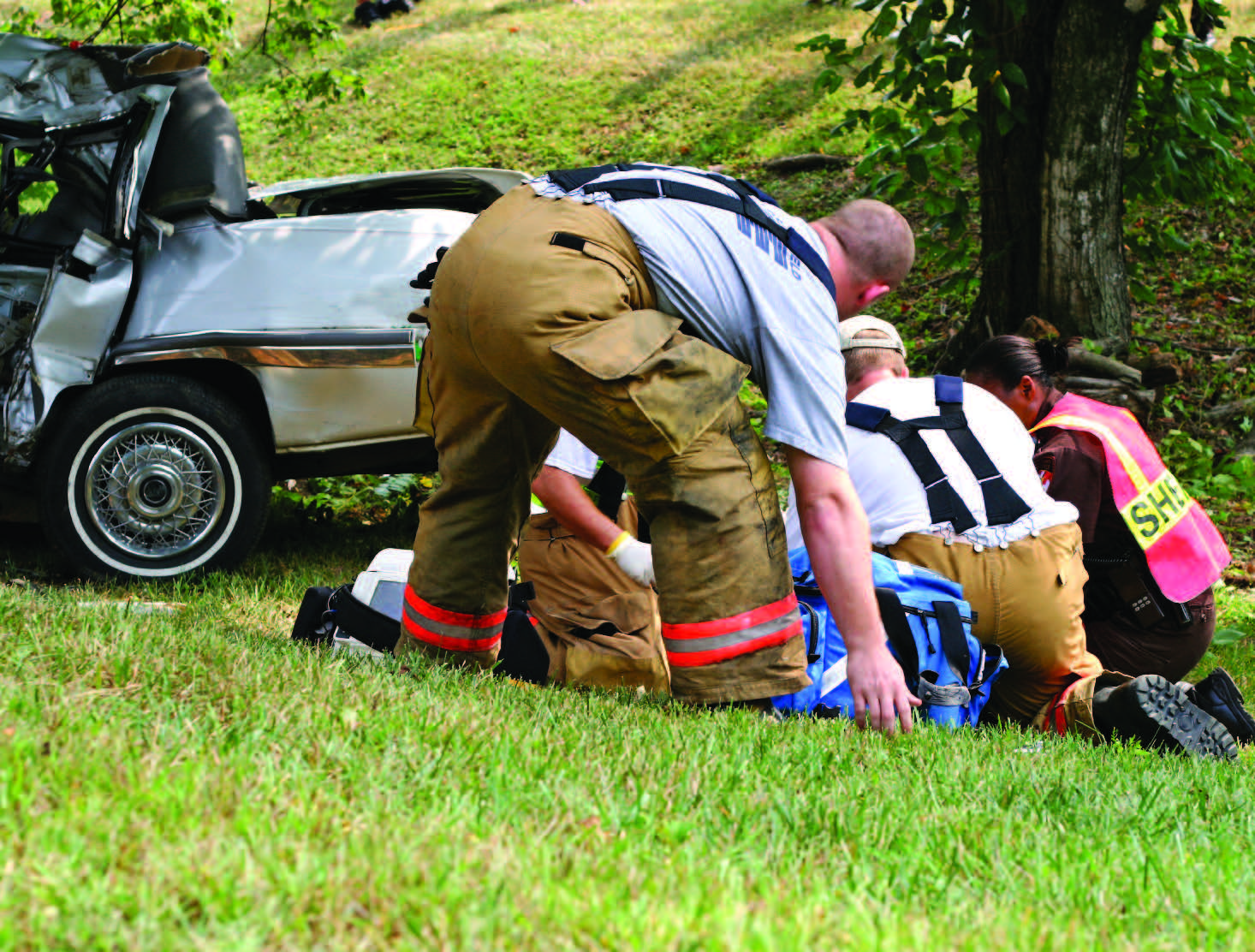
Police officers will identify:
• The drivers and vehicles involved.
• The direction the vehicles were traveling.
• The nature and condition of the road surface.
• Weather conditions.
• Obstructions or distractions that might have interfered with either driver.
• The insurance carriers for each person involved.
• The length of skid marks, if any, in an effort to determine the speed of each vehicle, the reaction time of the drivers, and the operation of the vehicle.
• The condition of each vehicle through a visual inspection.
• The details of the crash scene by taking photos.
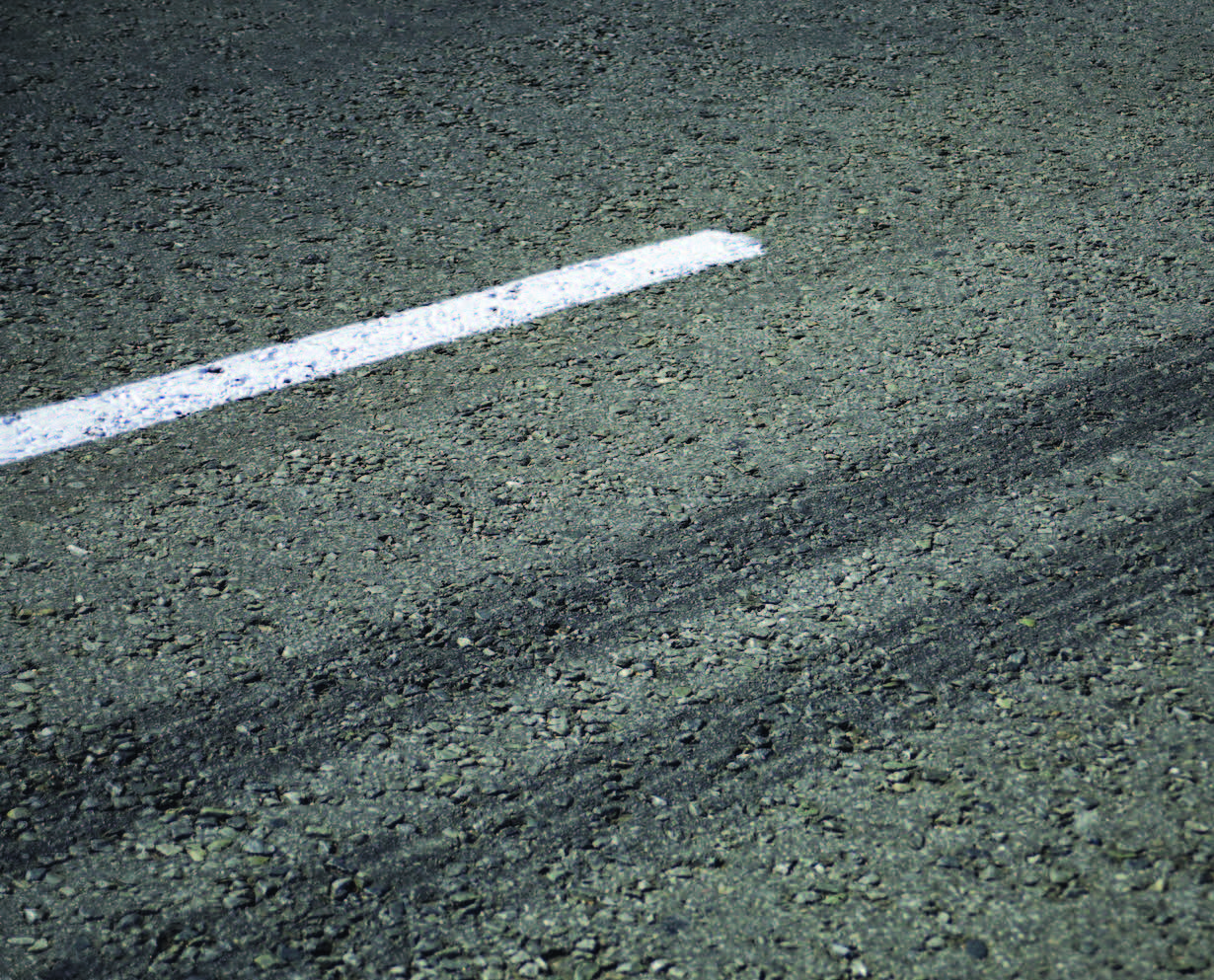
Crash reconstructionists can examine skid marks and estimate travel speeds, whether brakes were fully operational, and whether the driver was attentive.
The police will also interview the drivers and any witnesses. The drivers have a responsibility by law to identify themselves and to provide their versions of how the crash occurred. Drivers may be taken to the hospital or to a nearby testing facility to be checked for the presence of drugs or alcohol, should law enforcement officials feel that it is warranted. In serious crashes, officials may delay interviews until physicians clear hospitalized victims to speak with police.
In addition to documenting eyewitness accounts, investigators must carefully examine the vehicles involved. The condition of the tires will often be critically important. The officer’s report may note extreme tire wear as a contributing factor to a blown tire. The officer may take brake measurements to see if they are in proper adjustment; and the officer will examine loads to see if they were properly secured with straps or chains.
The investigating officer may look carefully at the weight of the load on the grower’s truck. The investigator may even calculate weights by picking up the grain and putting it on another vehicle to get approximate weights. The investigator will then compare this weight to the gross vehicle weight rating assigned to the truck and trailer and the weights allowed to be carried by the vehicle as determined by the motor carrier enforcement regulations.
After the investigation, the officer may issue citations to one or more drivers at the scene. After completing the initial investigation at the scene, the officer may have the truck, trailer, or both impounded, to be held for an even more thorough and in-depth inspection to determine the condition of the brakes, steering, suspension, and other critical components. The investigative report and all supporting documents and pictures will become a part of the public record.
The officer may even take the case to the county prosecutor’s office to see whether one or both of the drivers should be charged with serious criminal violations. The prosecutor’s decision to file criminal charges may hinge on the details set forth in the officer’s crash report.
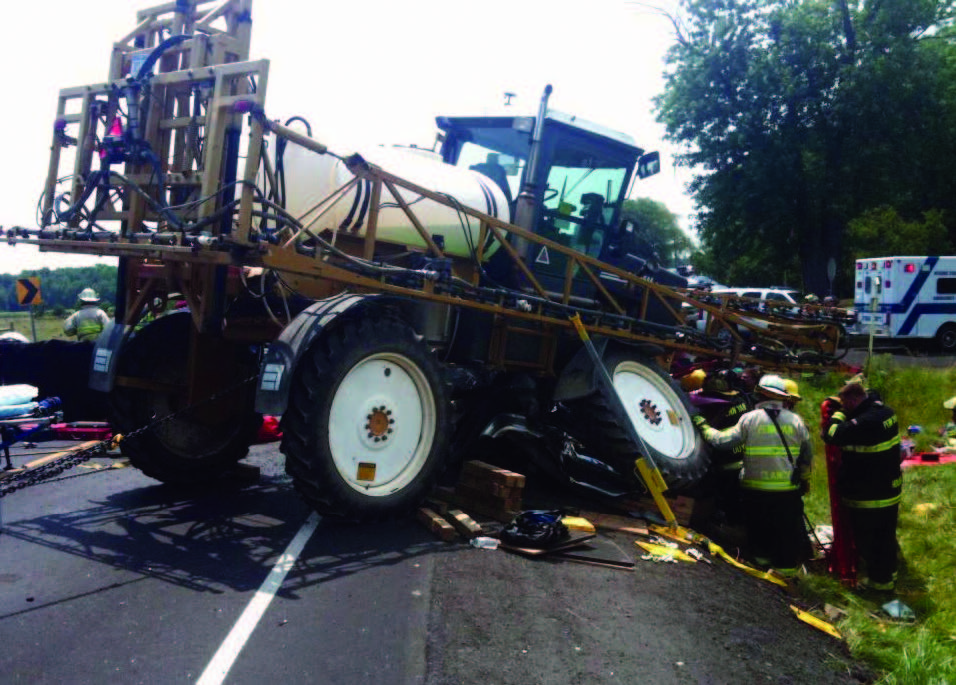
A driver tried to pass around this sprayer in a no-passing zone. A van carrying 13 passengers was traveling in the opposite direction. The van’s driver attempted to swerve around the oncoming passing car, but hit the sprayer head on. Five people in the van were killed. The driver of the car was charged with five counts of criminally negligent homicide and driving under the influence. Nevertheless, the driver of the sprayer might be brought into a lawsuit if it is thought they somehow contributed to the accident.
Notify Your Insurance Carrier Immediately
Your insurance contract requires that you notify your insurer immediately after a crash. The insurance company will send one of its adjusters, or it may hire an independent adjuster to investigate the crash. The sooner the investigator gets to the scene, the better the opportunity to view skid marks and other key evidence before they are removed or disappear with time.
Adjusters usually take photographs at the crash scene. They may also obtain recorded statements and interview drivers and eyewitnesses. If people are hospitalized, adjusters will wait to speak to them until they have recovered sufficiently.

Insurance agents should be more than people who bill you for coverage. Spend the time to consult with them on what your policy covers. Don’t wait until a crash to find out you don’t have coverage.
Attorneys for people who have been injured usually advise their clients not to speak with adjusters or investigators representing the other driver. It also is a wise policy for a grower and his or her driver to refuse to make statements to the other party’s insurance adjuster unless the grower’s lawyer advises otherwise or is present when the statement is given. However, you do have a contractual obligation to speak and cooperate with your insurance company’s insurance adjustor concerning the crash. Be sure you know which adjustor represents which company and party. You should always consult with your personal attorney if you have any questions or concerns about whom you should or should not talk to.
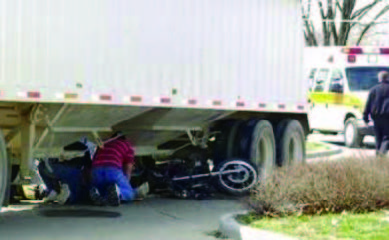
After any crash, it’s always a good practice to test your driver for drugs and alcohol to make sure they were not a factor.
Test Drivers for Drugs and Alcohol
After a serious crash, it may be beneficial for your driver to go immediately to the hospital for drug or alcohol testing, even if the police do not require it. Driving under the influence is one of the most serious accusations someone can make against you or your driver. One sure way to prove your driver was not under the influence is to immediately test him or her for alcohol and drugs.
Record Your Thoughts While the Details Are Fresh
Under the best of circumstances it’s hard to remember what happened last week, last month, or last year. Imagine being asked to recall the details of a crash years after the fact. It is important for the people involved in crashes to record their recollections as soon as the shock has passed. Write down what you were doing and seeing five miles, two miles, one mile away, and at the time of the crash. Remember to sign and date the document.
This level of detail will prove useful when your attorney (or the other party’s attorney) asks for a detailed written or recorded statement of what happened on the day of the crash. Notes recorded at the time will help you remember the facts as they actually happened, not as you think they happened. These notes may be used in any lawsuits that are filed. As a result, you should record these notes with the expectation that that others will be reading them at some point.

Be sure to write down every detail of a crash as soon as possible so that you leave nothing out.
Getting Served With a Summons
The first step of a civil lawsuit occurs when a plaintiff (the one who files a lawsuit) files a complaint. A complaint is a document that explains what the plaintiff alleges that each defendant did that caused injury to the plaintiff. Indiana trial rules require very little specificity in the initial complaint. Often, a complaint will just allege that the defendant was negligent on a certain date and that the plaintiff was injured as a result.
If somebody files a civil lawsuit against you, you will be served with a summons. This is the legal document that accompanies the complaint. A summons can be served in many ways — they can be sent by certified mail, hand delivered by a private process server, or delivered by a sheriff’s deputy. The summons is a court order informing you that you have been sued and that you must promptly file a written response to the complaint, which is attached to the summons. The complaint will explain why you are being sued and what the plaintiff hopes to recover. It is common for attorneys who represent plaintiffs to sue anyone who could be considered even remotely liable.
You may be sued either through your business entity (if you have taken the time to set up a separate entity) or personally. Typically, a defendant has 20 days to answer the complaint in writing. If you fail to answer or respond to the complaint within the specified time, you could have a default judgment entered against you. This could be a very costly mistake. You should always avoid having a default judgment entered against you.
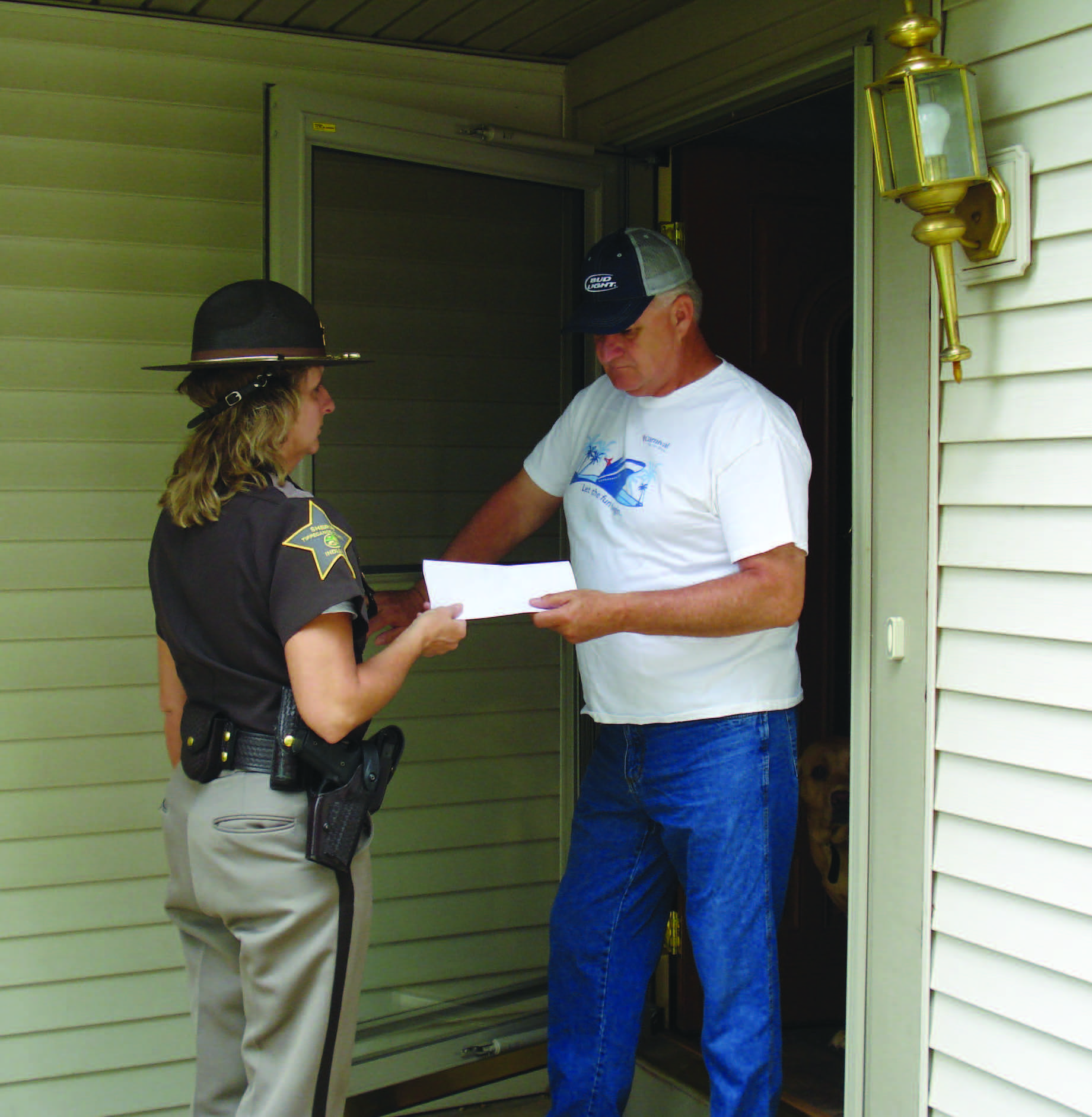
It is very important to respond to any summons that you are served with. Failing to respond may mean you loose the case by default.
If you ever receive a summons, you should immediately deliver it and the complaint to your insurance company and your personal attorney. If you have insurance for the circumstances described in the complaint, your insurance company should defend you. It is a good idea to make sure your personal attorney has a copy, too, to ensure that the response date is entered on your attorney’s calendar. In the event your insurance does not timely act on your behalf, your personal attorney can also enter a court appearance on your behalf to avoid having a default judgment entered.
Do Not Speak With the Plaintiff’s Attorney or Insurance Adjuster
Once you have an attorney to represent you, that attorney is the only person who may speak to the opposing attorney. Any person who wishes to speak to you about the case should go through your attorney. If others contact you about the crash, you should politely get their names and contact information, and then inform them that you are represented by counsel and provide them with your attorney’s name and phone number.
It is also a good idea to tell your attorney who has contacted you and provide your attorney with their contact information so that your attorney can contact them directly if desired.
Know What to Expect
If a lawsuit is filed, your insurance company will usually hire an attorney to defend and represent you in any settlement negotiations - provided you have the appropriate insurance coverage for the type of crash that occurred. You may also wish to hire your own attorney.
This is an especially important consideration if you may have additional liability exposure above and beyond your insurance coverage. After the complaint and answers have been filed, the next step is usually the discovery process. In the U.S. legal system everything is “discoverable” to the other parties with few exceptions. In other words, any information entered into the record by any party in the lawsuit is made known (discoverable) to the other parties. You and your attorneys have an obligation to answer most questions asked and to produce most documents requested.
There are severe and significant penalties for failing to produce discovery or destroying documents that should have been produced throughout the discovery process. For example, let’s assume that one of your drivers left you a note stating that the brakes in your tractor-trailer were not working properly and a week later, the truck was involved in a crash.
Under the rules of discovery, you have an obligation to produce that note if the other side asks you for it - even though this document would surely damage your case. You must comply with the discovery process, subject to limited objections. You should assume that the lawyers for the other side will leave no stone unturned.
Even if you destroyed the note after you learned about the crash, the existence of the note would very likely be discovered through depositions or other discovery tools. At that point, you will not only have the underlying lawsuit to deal with, but will also be forced to explain to a judge why you destroyed or tampered with evidence.
The plaintiff’s attorney will usually serve you - the defendant — with written discovery requests called interrogatories. This means they will send you a list of written questions that you are obliged to answer in writing and under oath. This is one instance when your detailed notes from the crash may be very helpful. Your attorney will assist you in responding to any interrogatories. You will also likely be served with requests for production, which ask you to produce a vast number of documents relating to the vehicle, the driver, and the crash. This includes things like truck inspection reports, driver records, and maintenance logs. Your attorney will decide what documents to send, and which requests to object to.
You and your driver will likely be required to give a sworn deposition that becomes part of the records of the case. Your lawyer will defend you at the depositions and provide you with advice and counsel as necessary. Here is a story from a grower who changed his practices because of what he went through in a deposition.
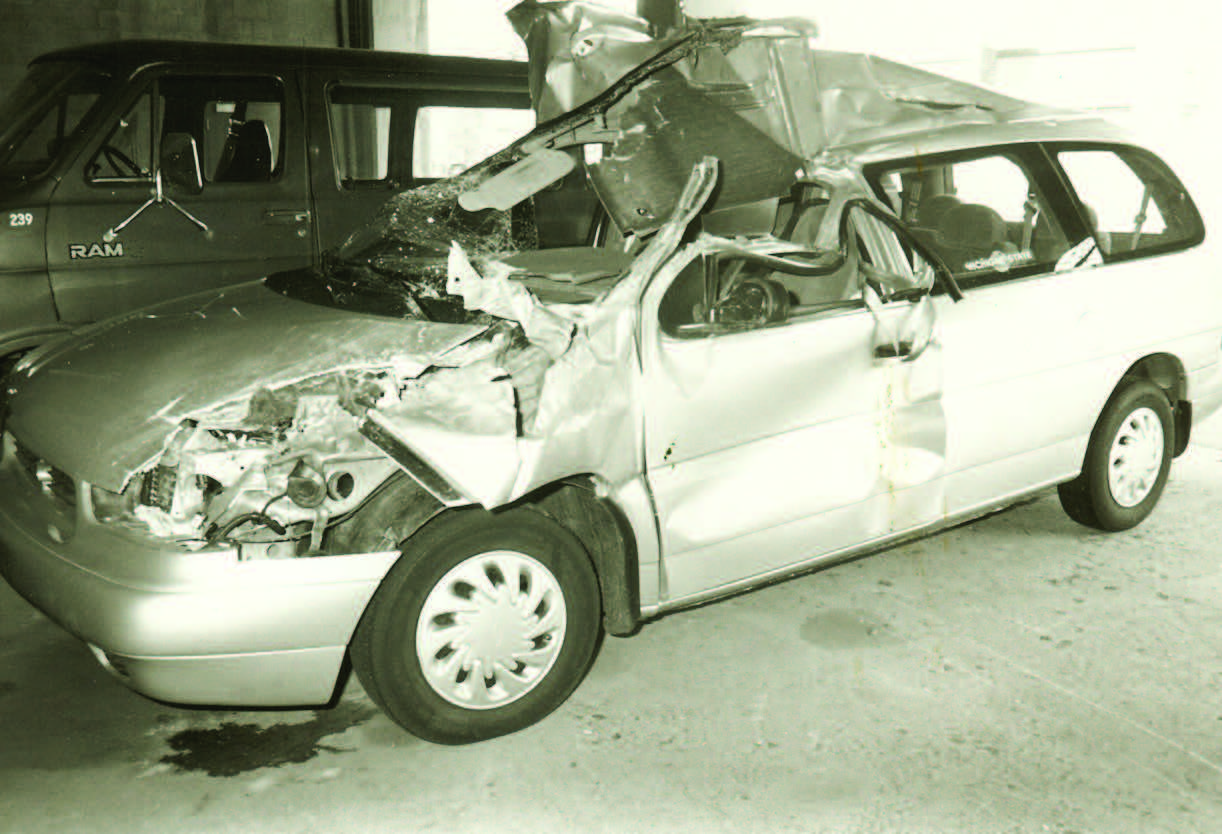
The driver of this car had a harrowing experience with a trailer: “Here is my crash picture. The trailer, which was coming towards me, disengaged from the pickup. Then the hitch came straight up, into, and through the driver’s side (ripping the roof up), and launched into the air. After they cleared the scene, the fireman came over and told me, ‘Lady, you sure are lucky — you need to buy us lottery tickets today.’”
“During the deposition, there were a lot of questions about who did what. I understood that it was legal for growers to do their own truck inspections if they were qualified, but there were a lot of questions about whether or not we were properly trained, how we got trained, and what we knew.
“We have changed what we do now when it comes to inspections. We do the majority of the work in our own shop, but we then have that work inspected by a local garage. If it’s nothing major, we will do the work, and let the garage do the inspection. If they find a problem, we will bring the truck back and fix it or let them make the repairs. “I just want to be honest.
We didn’t want to simply tell them that we did the work in our shop and that our guys are capable. We wanted to make sure there was a third party who checked our work to make sure what we were doing was proper.”
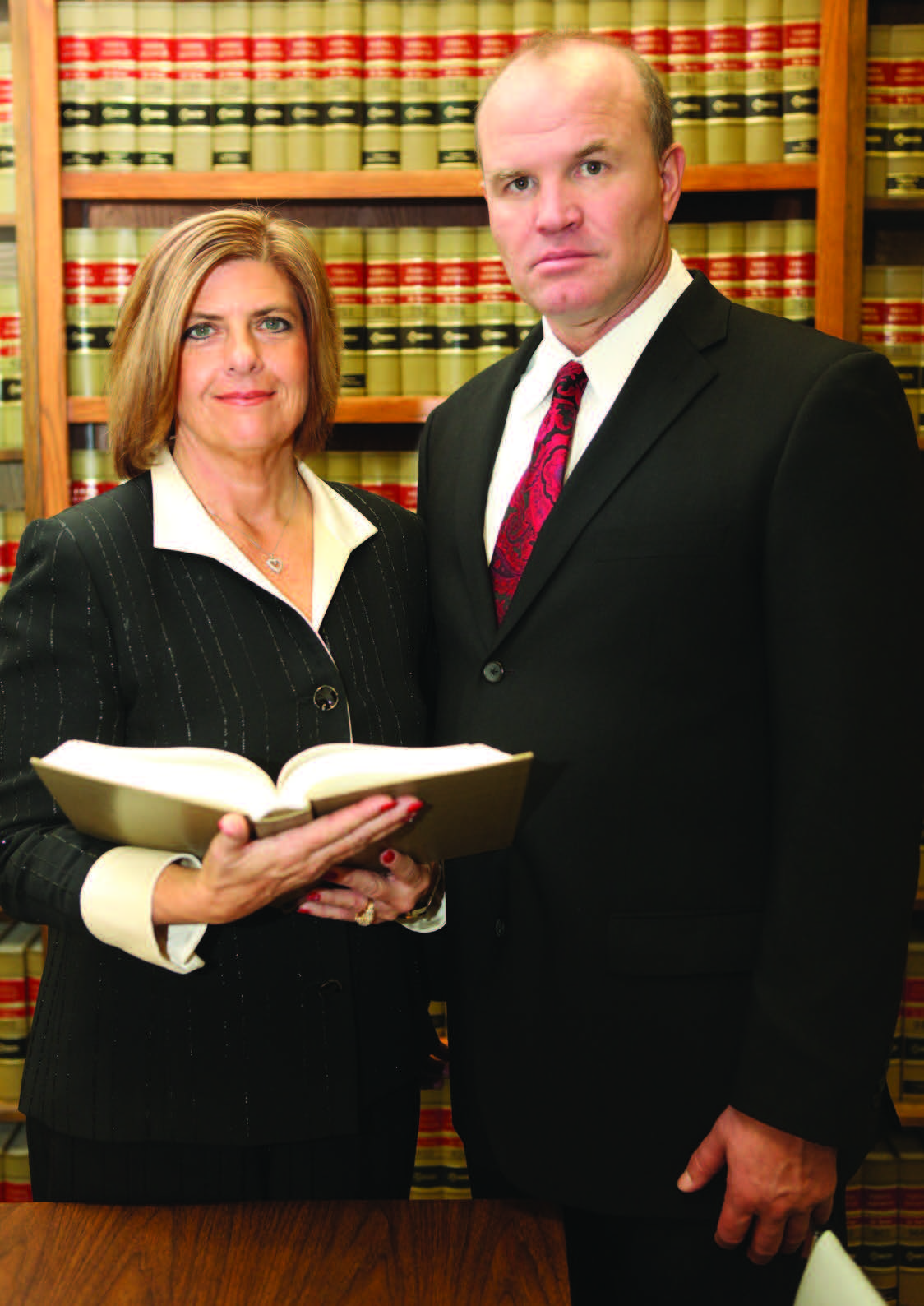
Hiring A Personal Attorney
The attorney your insurance company selects and hires is really hired to represent you, even though the insurance company pays him or her. This attorney must balance your interests with that of the company paying the attorney fees. Although this usually does not create any issues, there are certain circumstances when you may be best served to hire your own attorney to look out for your interests.
If you choose to hire your own attorney, you will have to pay the fees yourself. If you hire your own attorney, he or she will typically monitor the case and the actions of the attorney your insurance company hired. The decision of whether to hire your own attorney is especially important when the plaintiff’s demands exceed your policy limits, or if the plaintiff is seeking punitive damages — insurance typically doesn’t cover punitive damages.
Out-of-Court Settlements
The majority of all cases (by far) are settled without a trial. Many cases are settled before a suit is even filed. With insurance companies, whether or not to settle is generally a business decision. They review and analyze a host of factors and decide how much they are willing to pay to settle a claim. The insurance companies well understand the risks, uncertainties, and expenses of litigation, so they analyze these factors to decide when it’s better to settle and when it’s better to go to trial. You may want the insurance company to go to court to fight what you believe are grossly unfair charges that have been brought against you.
The company may be reluctant to do so because it is expensive and the outcome is uncertain. Nobody knows with complete certainty what a jury will do or whom they will believe. That uncertainty often compels the parties in a lawsuit to work hard to negotiate a settlement whenever possible.
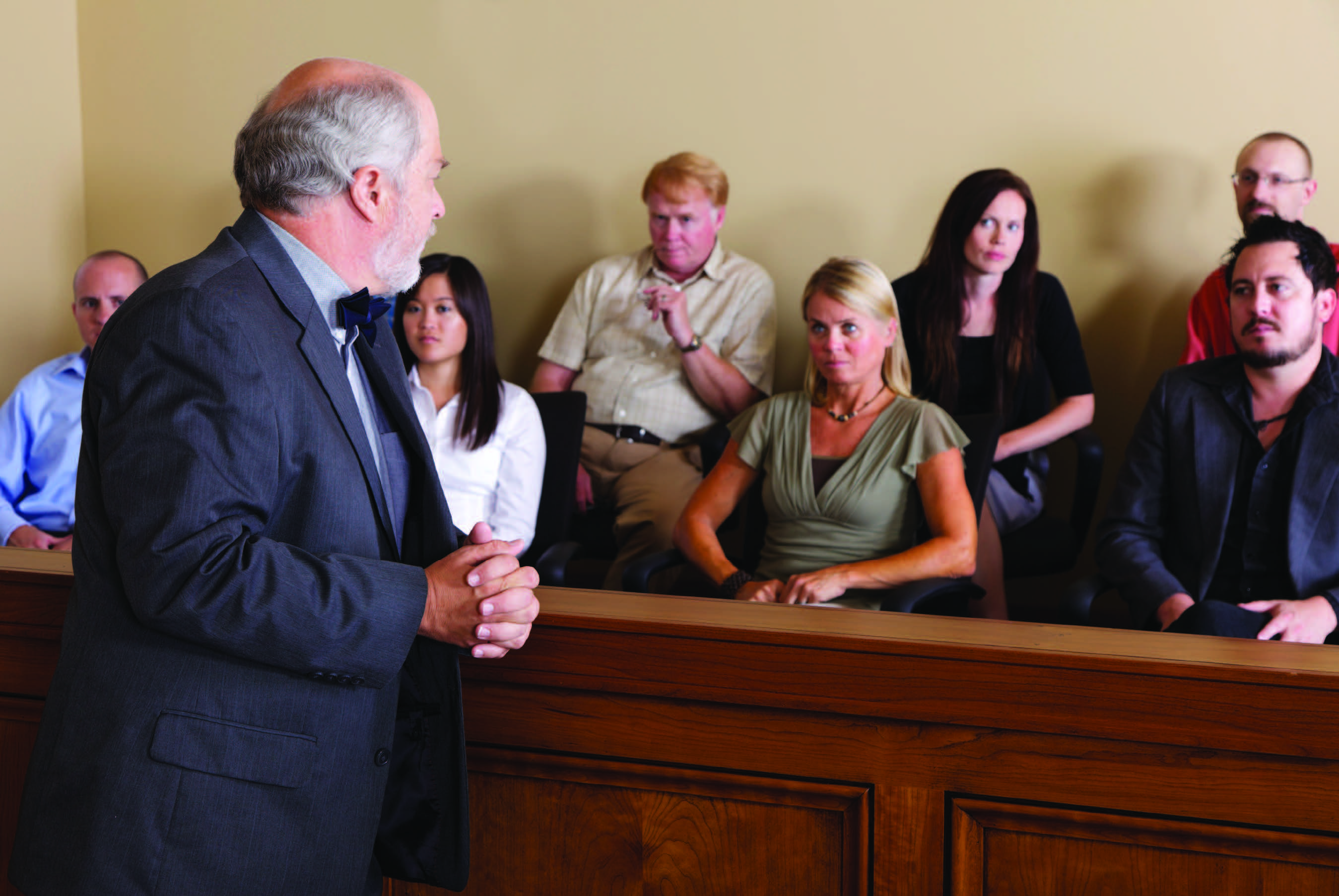
In any trial, lawyers make their best arguments, but an outcome is never certain with a jury.
Ultimately, the decision to settle or fight is primarily in the hands of your insurance company and will be based on their perception of risk. As the insured party, you may have little say in whether a settlement or trial is pursued. Your insurance contract requires you to fully cooperate with the insurance company’s attorney, and to provide all reasonable information and assistance that the insurance carrier feels is necessary to defend the lawsuit.

Mediation Is Another Important Tool to Resolve Cases
Judges want to get cases off their dockets and they know that mediation is successful in a very large percentage of cases. For that reason, judges often order defendants and plaintiffs to attempt to resolve their differences through mediation. Each party must participate in mediation in good faith, although they are not required to reach a settlement.
Mediation typically begins after a lawsuit has been filed. Both sides meet in the presence of an impartial mediator who will discuss the details of the case with the parties and counsel, analyze, and explain the the strengths and weaknesses of the case. The mediator will attempt to facilitate a mutually agreeable agreeable solution among the parties.

The key benefit of the mediation process (and an agreed upon resolution in general) is that the parties have input and control over the outcome. A jury trial, on the other hand, is as unpredictable for both parties as a “roll of the dice.” For mediation to be successful, both plaintiff and defendant need to understand that they may have a lot to gain or to lose by going to trial.
Judges and mediators cannot force any party to accept a settlement. The process begins with a face-to-face meeting with the mediator, in which each party outlines their cases, initial demands, and offers. After the mediator makes an opening statement, the parties go back to separate rooms with their attorneys. The mediator then goes from room to room gathering and relating information to both sides in an effort to get the case resolved.
If the parties reach a settlement agreement, the mediator will work with the attorneys to put the agreement in writing. This written agreement is a contract that will detail the terms upon which the parties agree to resolve the case. The signed documents may be confidential and are usually not presented directly to a judge or court. Instead, a mediator will typically notify the court that the matter has been mediated and will indicate whether the mediation was successful or not.
If one party fails to comply with the terms of a mediated settlement agreement, the other party may seek the assistance of the court to enforce the settlement agreement. All communications with a mediator and that go through the mediator are confidential. The law prevents a party from calling a mediator as a witness in a lawsuit. Therefore, anything you or your opponent say to a mediator will be held in strict confidence. This confidentiality preserves the ability of the participants in mediation to discuss their case without fear of it ever being used by the other parties in the suit.
Arbitration Seldom Used in Negligence Lawsuits
Arbitration is seldom used to settle negligence lawsuits. Arbitration is more prevalent in contract cases and the right and/or obligation to arbitrate a matter is typically set forth in contractual agreement. The contract will specify whether the arbitration will be binding or nonbinding.
You will often find an arbitration clause in a contract with a seed or implement supplier. Arbitrators listen to the evidence, arguments, and positions from both sides in a dispute. The arbitrator then makes a decision that is either advisory or binding upon the parties — depending on the type of arbitration. Parties to binding arbitration are required to follow the arbitrator’s ruling. If they don’t abide by the ruling, then either of the parties can seek the assistance of the court to have the arbitrator’s decision enforced.
Taking the Case to Court
Should you find yourself in a personal injury lawsuit related to an automobile- or farm-related crash, you will likely find yourself in state court. There are limited circumstances in which personal injury cases could be brought in federal court, but for the purposes of this publication we will focus exclusively on the Indiana court system.
All litigation matters start at the trial court level. Indiana has both circuit courts and superior courts at the trial court level. Generally speaking, there is no real difference between circuit and superior courts - both are trial courts. They are courts of general jurisdiction and courts of record. When a plaintiff files a lawsuit with the clerk of a particular county, the claim is randomly assigned to the court and judge. Whether the case ends up in a circuit or superior court, there is no consequence on how the case is tried or on any of the underlying legal issues. The trial court will hear the matter and determine the outcome of the case by having a bench trial or jury trial.
A bench trial is a trial in which evidence is presented to the judge and the judge decides the outcome. In a jury trial, the evidence and arguments are presented to a jury and the jury determines the outcome.
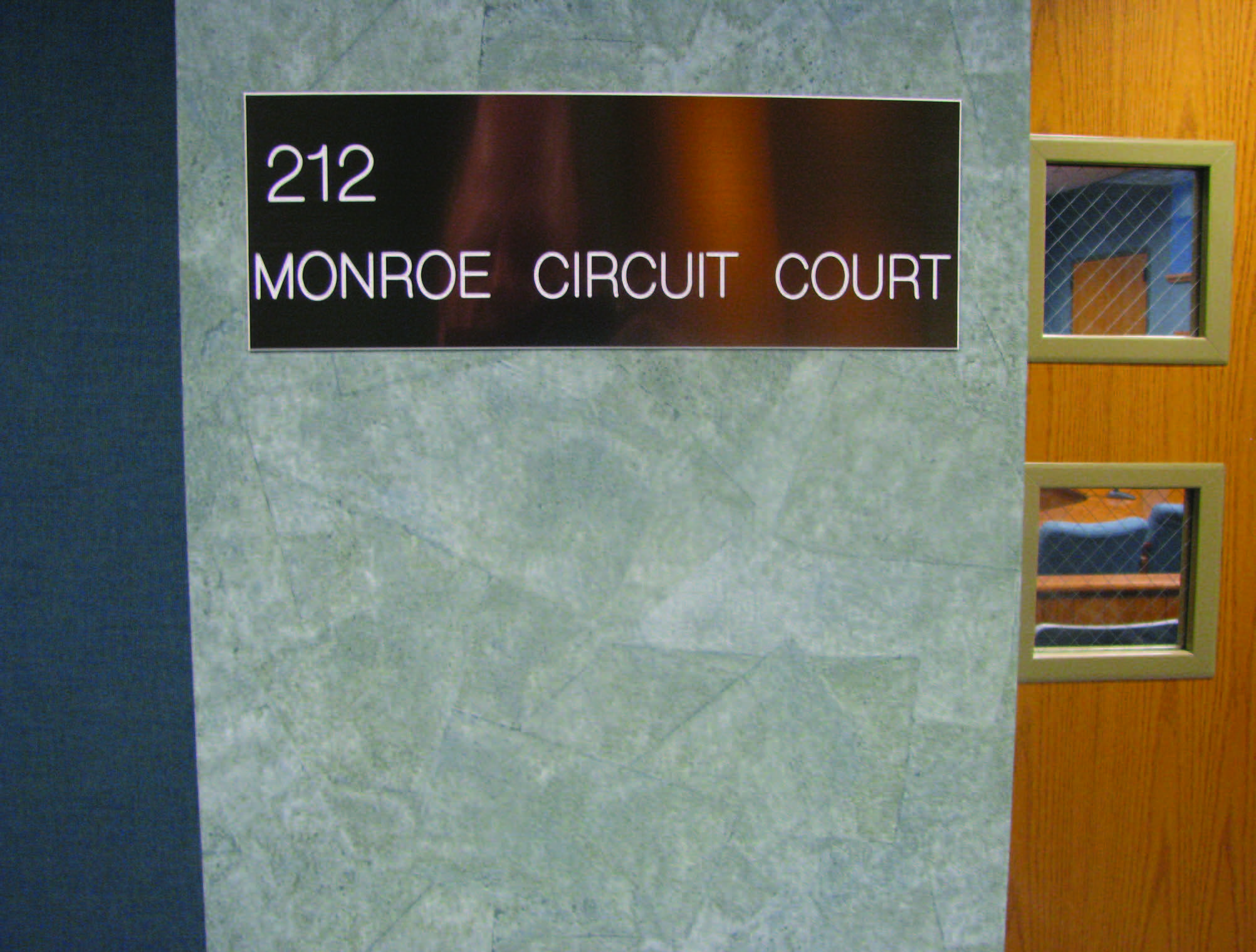
Parties to personal injury lawsuits have the right to have their matter decided by juries; however, they must request a trial by a jury. If no party requests a jury trial in a timely manner, then the right to a jury trial will be waived. If the parties are unable resolve a case, then it will move forward to trial. Typically, negligence cases will be presented to juries. The jury’s job is to weigh all the evidence and come to factual conclusions about what happened, who was at fault, and the amount of the damages. The judge decides and instructs the jurors on the law. The judge also determines evidentiary and procedural rules.
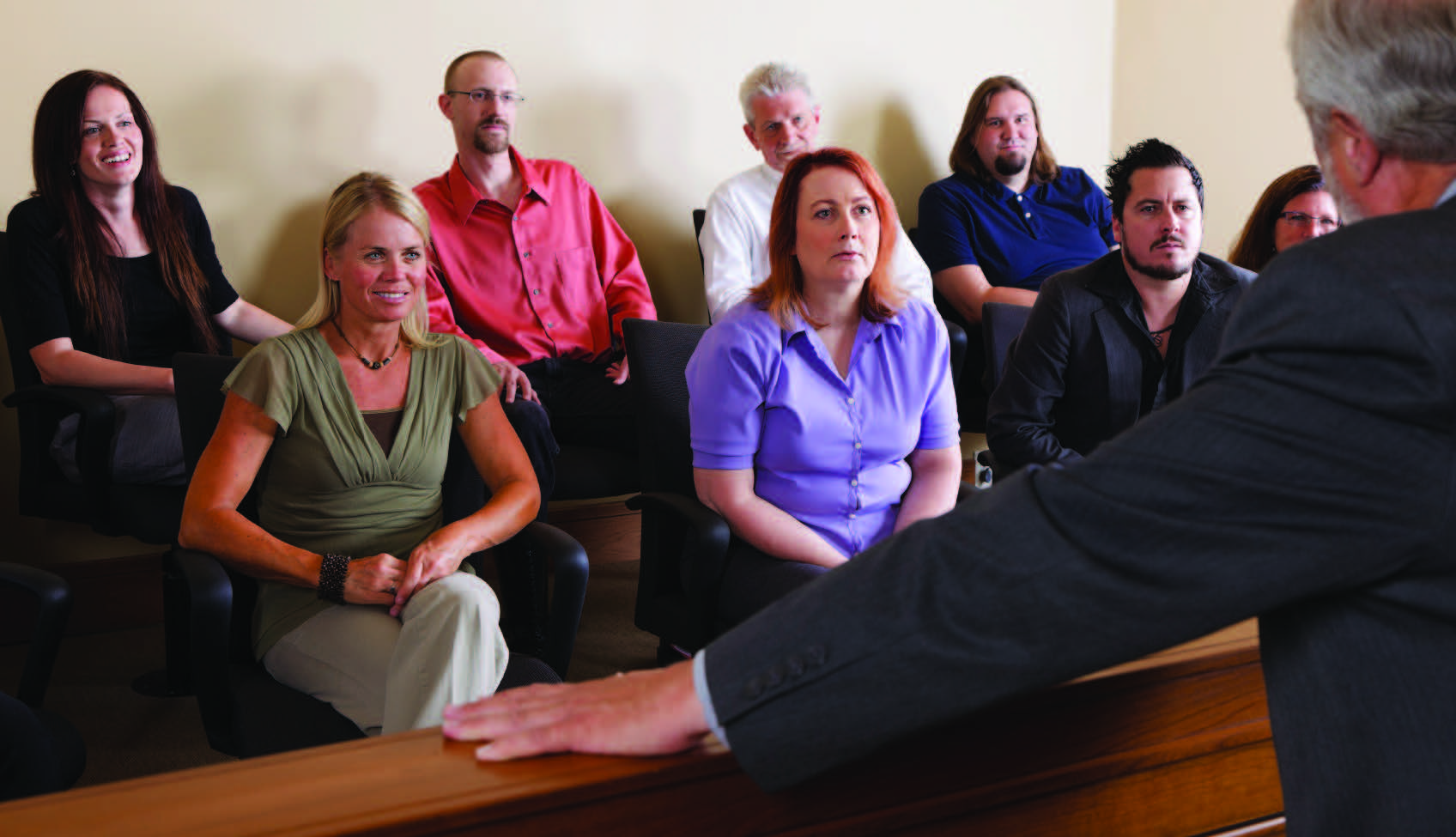
Members of a jury have to make decisions about complex and complicated issues.
Jury Trial
In cases that go to trial, both attorneys will have an opportunity to call for testimony from witnesses. Common witnesses include eyewitnesses, police officers who investigated the scene, and expert witnesses hired by one side or the other. It is worth noting that witnesses may only give an opinion about an issue in a case if they are first qualified as an expert. People who commonly qualify to give expert testimony in a personal injury matter include: crash investigators, doctors, and police officers.
Before determining whether someone qualifies as an expert, the court will examine the potential expert’s:
• Involvement in the crash investigation.
• Credentials, educational background, and training.
• Amount of experience in the field he or she will testify about.
• Facts and methodology that he or she used to come to his or her conclusion.
Expert testimony is usually based on facts provided to the expert by others so he or she can reach conclusions on key issues. For example, an expert may be asked to determine who was negligent or at fault based on skid marks, the amount of damage to the vehicles, the extent of injuries, the road conditions at the time, or the behavior of the drivers. Imagine if a police officer on the stand testifies, “The brakes were out of adjustment and the tires were bald.” The plaintiff’s lawyers might be able to use this testimony to their advantage, even if their client might also have been responsible for the crash.
The plaintiff’s attorneys could argue that the crash might have been prevented or the injuries would have been less severe if you had maintained your vehicle in good working condition. The lawyers could argue that the plaintiff will spend the rest of his life in a health care facility, unable to recognize his family or the world around him due to your negligence. Such emotional appeals can often persuade jurors.
Testifying Under Oath
If you are involved in litigation related to a crash, you will likely be required testify under oath. The most common types of testimony for a party to a lawsuit are in depositions or on the witness stand at trials. If you give a deposition, it will likely be taken before trial. Your deposition provides the parties with a preview of what you will say if called as a witness in court. Your deposition is taken under oath and a court reporter will be present to transcribe both the questions the lawyers ask and your answers. If your case goes to trial, you will almost always be called as a witness.
The plaintiff can call you as a witness — so can other defendants or your own attorney. It is very important that your testimony at trial matches both your deposition testimony and any other sworn statements that you have given throughout the litigation process. When testimony is inconsistent, the opposing attorney will attempt to use that inconsistency to impeach you on the witness stand.
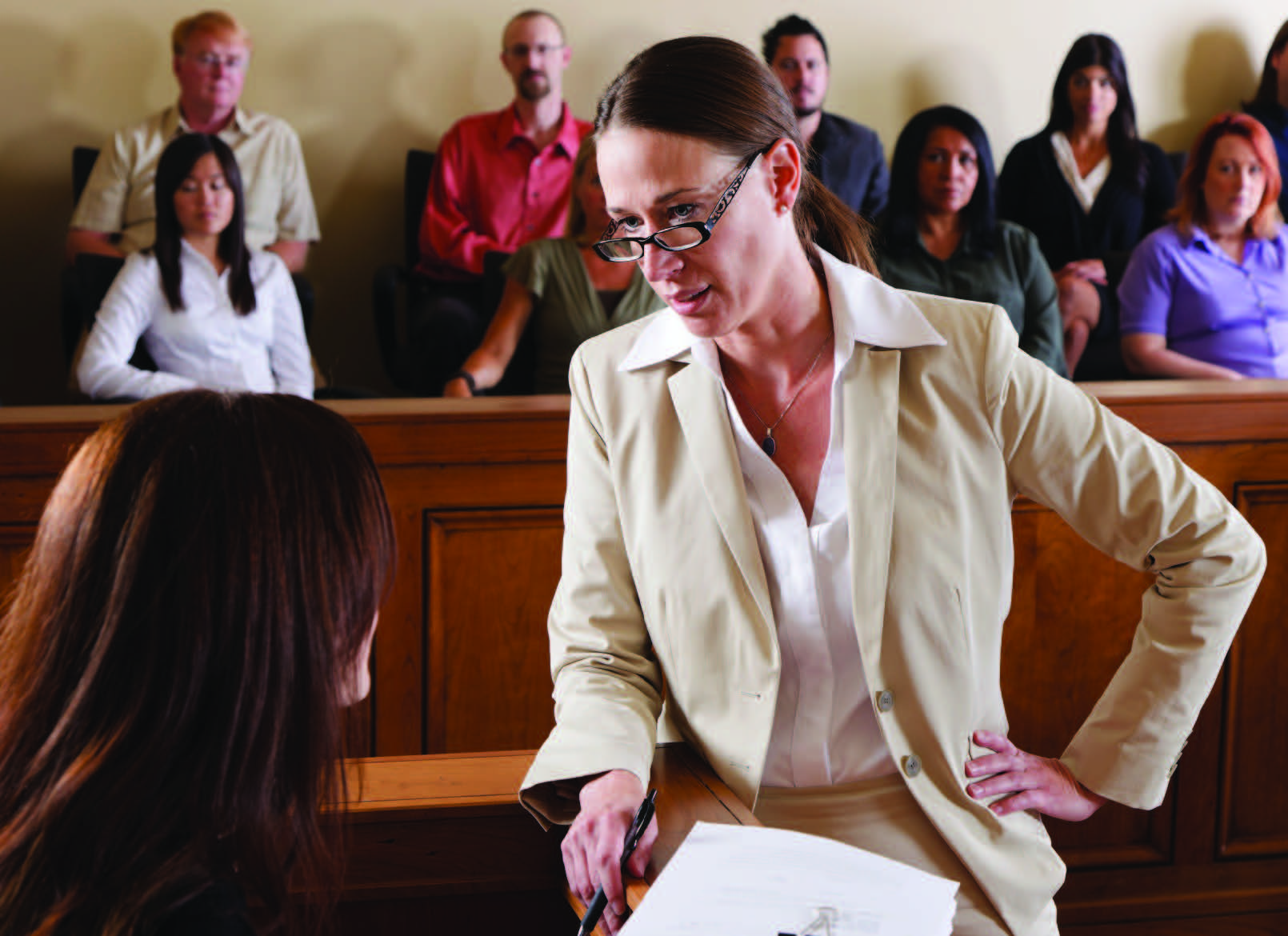
Testifying in court helps present your side to members of the jury. Your attorney will explain to you how to answer questions under pressure from the opposing legal team.
For example, in your deposition you testified that the traffic light was green, but at trial you testified that the light was red. You have just impeached yourself — giving the other attorney the opportunity to ask you which time, under oath, you were lying. This can irreparably damage your credibility with the jury and significantly damage your case if the inconsistency cannot be explained.
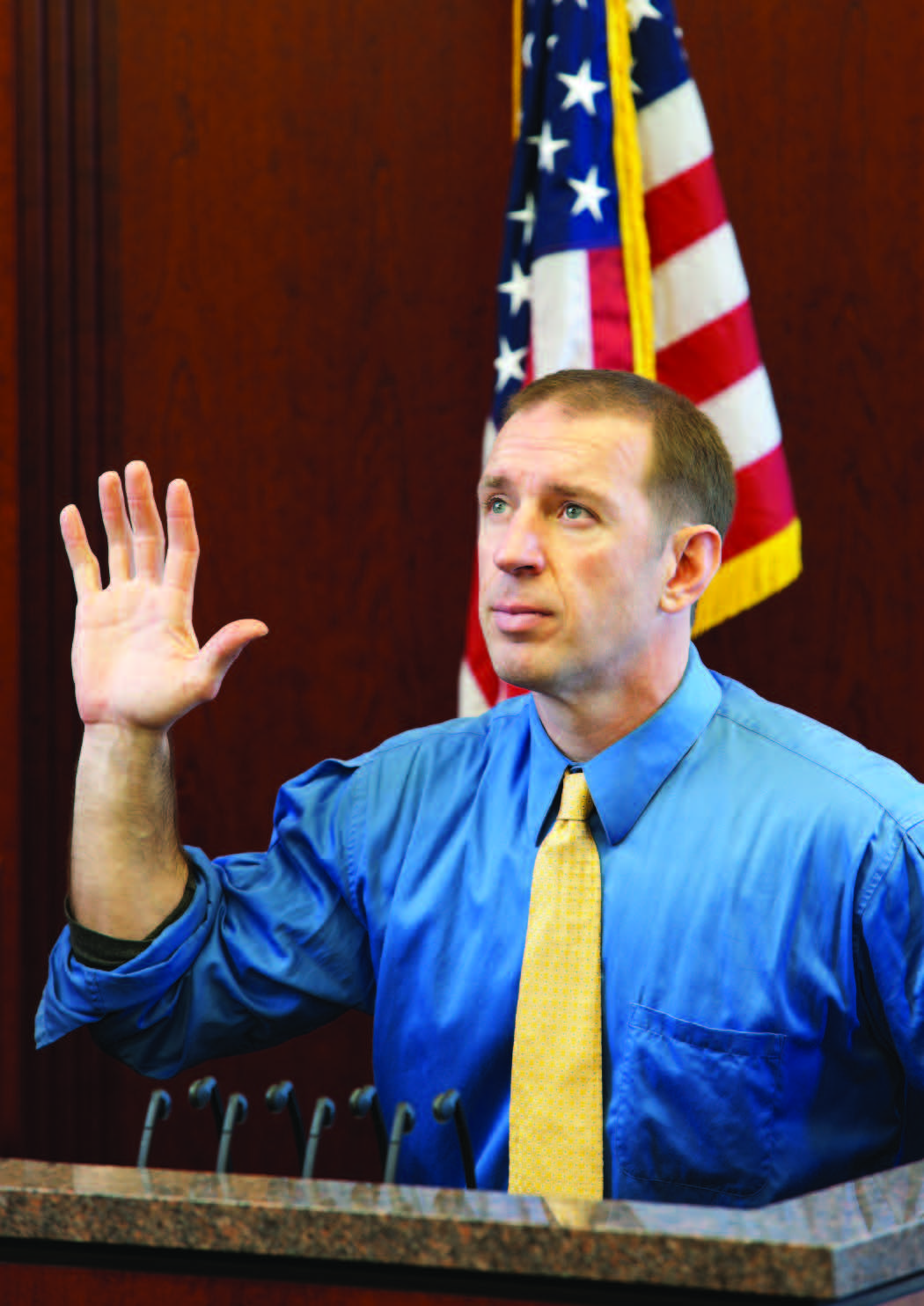
If your attorney puts you on the stand, then everything you say is under oath and subject to criminal penalties for perjury.
Your lawyer will help prepare you for both your deposition and trial testimony. He or she may ask you to review discovery and other documents in the case to brush up on things you might have forgotten. Be sure to follow your attorneys’ preparation requests. Your testimony and presentation are very important to your case.
The two most important things to remember are: (1) always tell the truth, and (2) “I don’t know” or “I cannot recall” are often acceptable answers. Witnesses tend to guess or assume an answer, but doing so can ruin your credibility and damage your case.
Piercing The ‘Corporate Veil’
Corporations and other business entities (such as limited liability companies) help insulate your personal assets from the liability exposure of your business entity. However, this veil of protection can be pierced if you do not take the proper legal steps in both the creation and management of your farming operation.
If you ignore the proper procedures and practices for operating a corporation, you could become personally liable for wrongs committed by your corporation. For instance, if you have formed a couple of corporations, but continue to operate with one checking account for personal and business transactions, the corporate veil may be pierced. In layperson’s terms, if you treat your personal affairs and corporate affairs (farming operations) as one and the same, then the court could do so as well. That means a judgment or liability exposure from a suit could attach your personal assets.
The plaintiff’s attorneys may argue that although you have a corporation, it did not act or operate as a separate entity. The argument continues that the funds for the corporation and the person (you) were commingled so you could not tell who was doing what. This implies there is really only one entity, rather than a separate, standalone entity with one or several owners. It is critically important that you adhere to the required corporate formalities, such as filing annual reports, conducting annual meetings, keeping proper corporate records, and complying with the laws and by-laws of the state in which your corporations are organized. It is important to consult with an attorney on these issues before you find yourself in litigation. Your attorney should provide you with instructions to help prevent anyone from piercing the corporate veil.
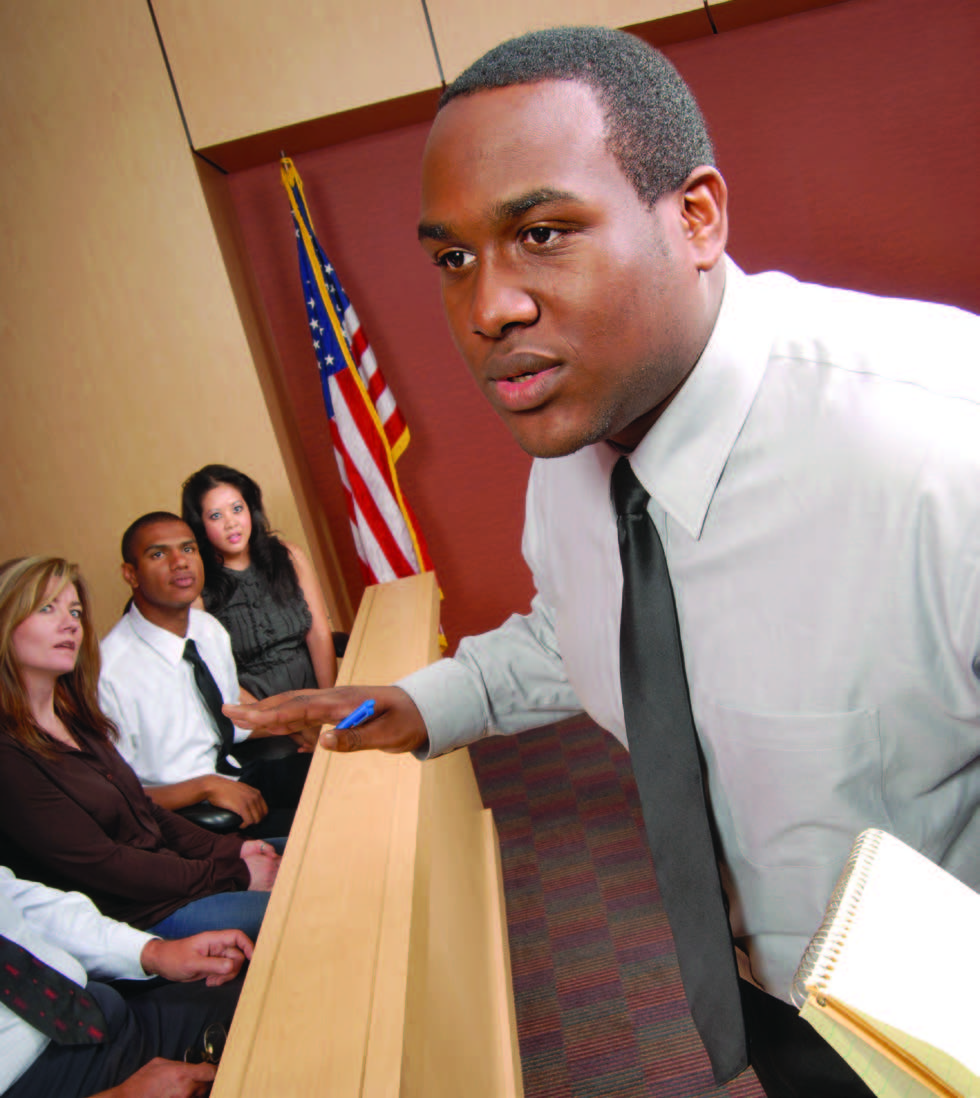
Our legal system is based on a framework of written laws, legal representation, and evidence. Your attorney will make closing arguments in an effort to persuade a panel of jurors that the arguments made on your behalf hold more weight than those from the plaintiff ’s side.
Assigning Fault
We are all under the belief that the person who causes a crash or collision will be responsible for any of the resulting damages. In other words, if one of your trucks causes a crash, you will be responsible for the medical costs and other injury-related expenses. Conversely, if the other party is at fault, they should pay for damages.
It is very important to recognize that liability questions arising from a crash may be unclear. This problem can be even further enhanced when the crash involves farm equipment. For example, let’s say you are driving a tractor down a rural road and you are rear-ended by a car at high speed. This seems like a clear-cut case in which the person driving the car would be found to be 100 percent at fault.
Now, let’s change the fact pattern. Let’s say you did not have a slow-moving vehicle sign on your tractor. Does that change the fault allocation? The attorney for the driver will surely argue that it does. The attorney will point out that state law requires a slow-moving vehicle sign and that you were negligent as a result of not having the mandatory sign on your equipment.
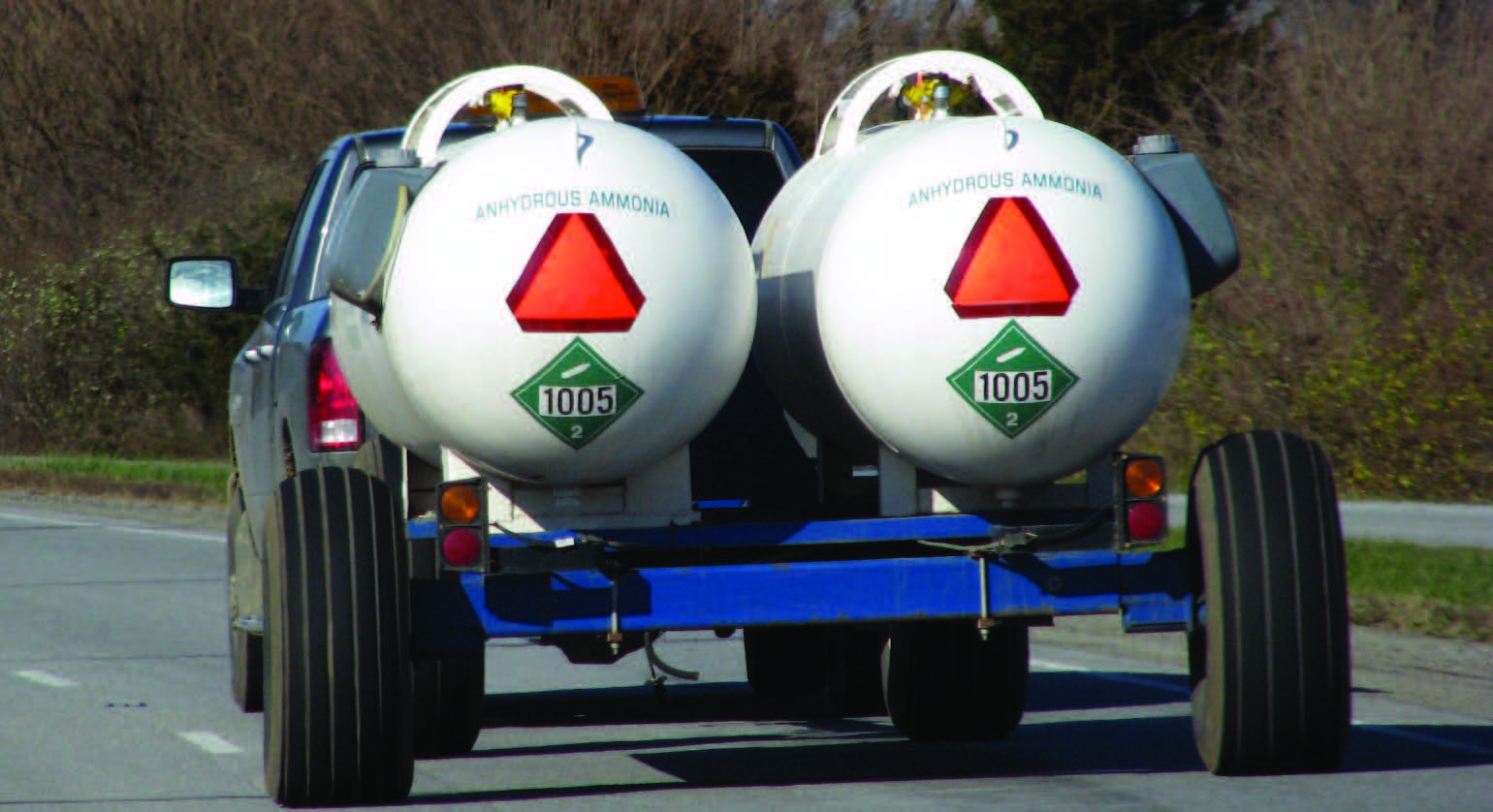
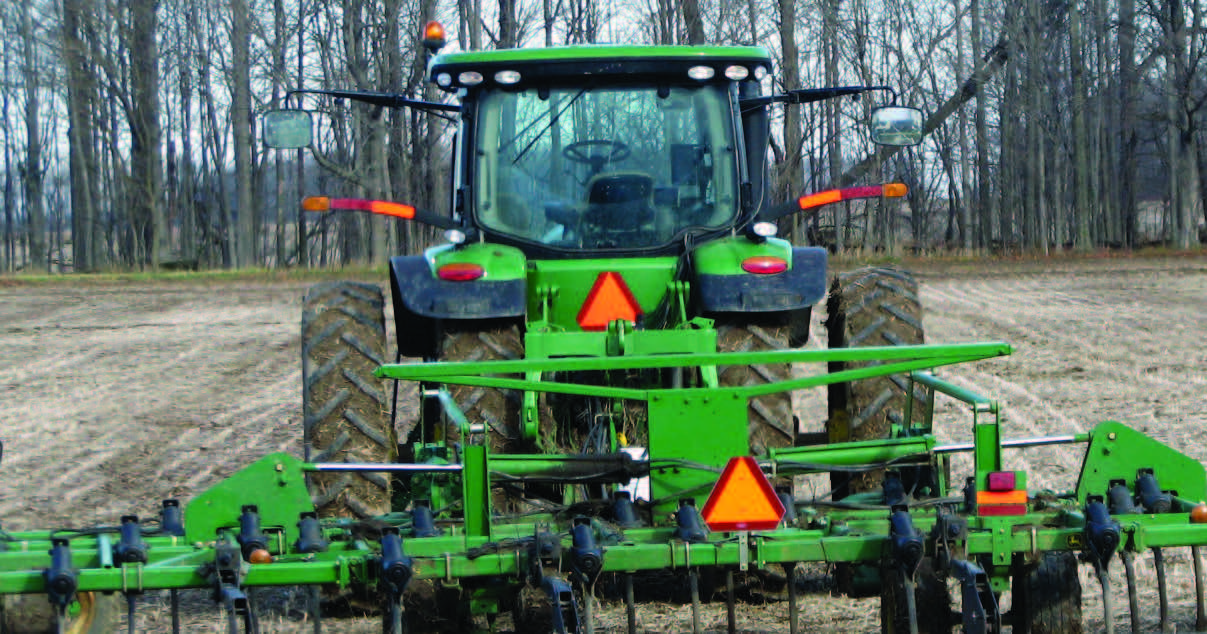
Making sure you have slow-moving vehicle signs on your vehicles can help protect you in potential lawsuits.
Comparative Fault
Indiana is a comparative fault state, which means that a plaintiff’s recovery will be reduced by his or her percentage of comparative fault. If you refer back to the example in which you didn’t have a slow-moving vehicle sign on your tractor, a jury would determine how much fault to assign to each person — the driver and you. The jury may also assign part of the fault to a nonparty who was not named in the lawsuit, such as an unknown driver who left the crash scene before police arrived. The jury would also be asked to determine the amount of damages.
The plaintiff will then recover the damages minus the amount he or she was found at fault. So, if the jury finds the driver of the car to have incurred $100,000 in damages and was 40 percent at fault, the driver would recover $60,000. The concept of comparative fault is usually analyzed and addressed in settlement negotiations as well, because a jury trial is typically the end game of any claim or lawsuit.
Sometimes, a number of individuals and businesses are named in a lawsuit. Ultimately, percentages of blame will be assigned to everyone the jury finds responsible - sometimes the allocation is 0. Examples of potential parties in a lawsuit would be the plaintiff, driver or employee, employer, owner of truck, the person or business that loaded the truck, the business or person that maintains the truck, or anyone else who might have some responsibility (no matter how remote) for the crash.
The Appendix (page 34) is an example of a verdict form that jurors complete. The jury assigns a percentage of fault to each party involved in a crash and they decide the amount of damages. After that, it’s simply a mathematical computation. By way of example, let’s say that a jury finds that damages to be $1,000,000 and that the plaintiff should be assessed 25 percent of the fault for the crash - the plaintiff would recover $750,000. Each defendant is only responsible for his or her percentage of the total amount of the damages.
This all sounds confusing and it is - juries struggle with this concept. This is one of many reasons why so many cases settle before trial. In a case with serious injuries and damages, all parties are nervous to leave these complicated calculations in the hands of strangers who have probably never heard of, thought about, and may not fully understand the concept of comparative fault.
Generally, if a plaintiff’s percentage of fault is greater than the fault of all the other parties, the plaintiff will be barred from recovering any damages. In other words, if the jury determines that the plaintiff was more responsible than anyone else for causing the crash, then the plaintiff cannot recover any damages from the defendants.
Judgments

Verdicts vary according to the facts of the case and the jury deciding the case. Lawyers often cannot predict what a jury will do with a case. After deliberating, a jury may award no money. In another case with identical facts, it may award millions of dollars to the plaintiff. Indiana law does provide guidelines on how much certain verdicts can be. For example, the law limits recovery for wrongful death of an adult with no dependents to the amount necessary to pay for medical, funeral, and administrative expenses, plus $300,000. If a young married man with children is killed in a crash, there are no limits on how much the family can be compensated if the defendant is found to be at fault. The Indiana General Assembly makes these laws.
When a judgment is entered against you, the plaintiff generally has 10 years to enforce it. If you have the appropriate insurance coverage, then your insurance company will pay and satisfy the judgment according to the limits of your policy. If the judgment is not fully paid after the insurance company pays its portion, then a lien can be placed on any real property owned by the defendant in the county where it was recorded.
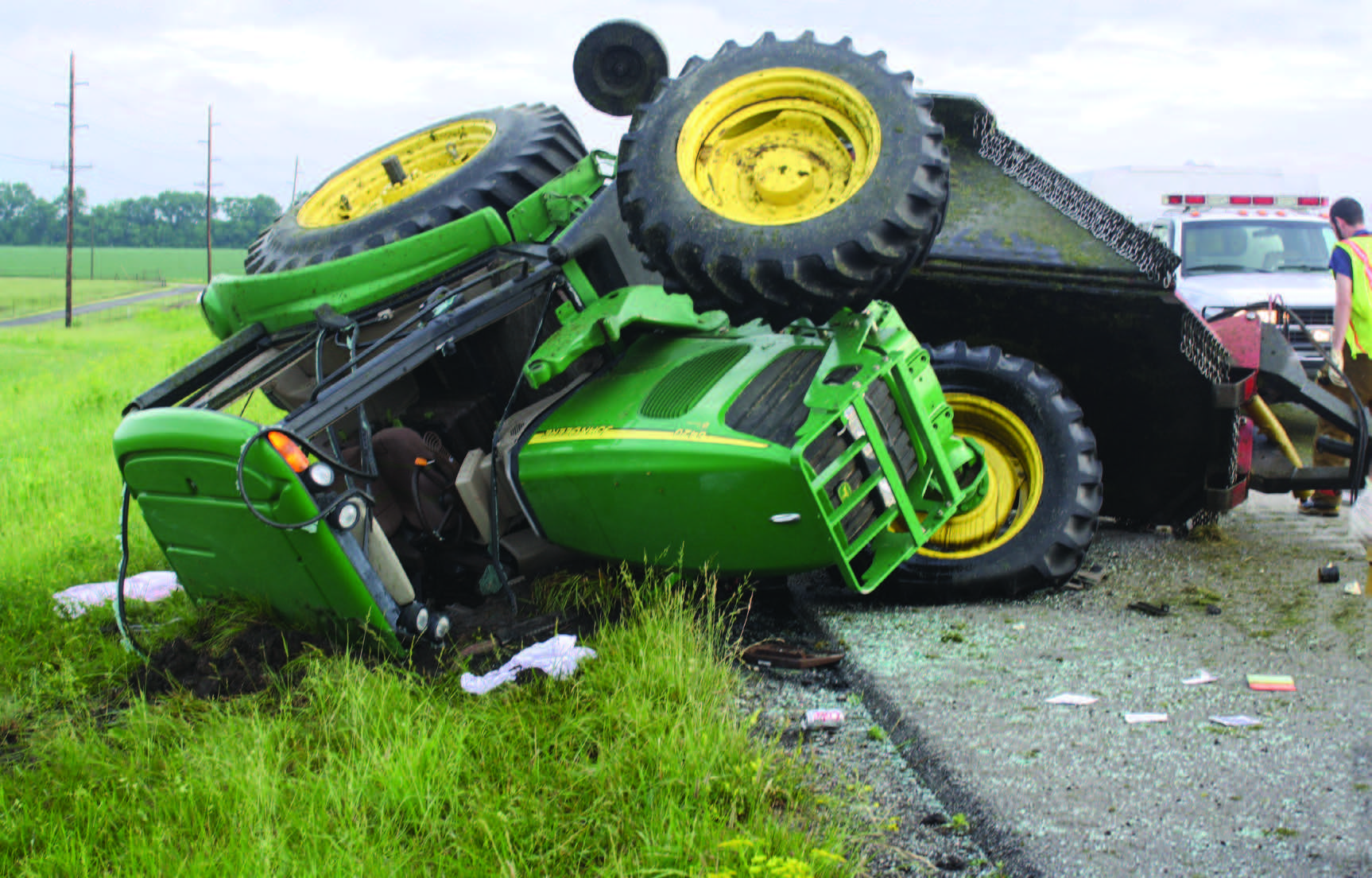
Judgments also accrue interest at the statutory rate, which is currently 8 percent. If you are unable to pay a judgment, it remains as an uncollected claim. The plaintiff can collect the judgment from a sale of your property or by garnishing your income. If you inherit some money, the holder of the judgment could ask for payment. The judgment holder can also obtain a court order freezing and then seizing money in your bank account.
Regardless of which party succeeds, each party in a negligence action must pay its own attorney’s fees. Even if the plaintiff does not recover any damages, the plaintiff is only responsible for paying your attorney’s fees if a judge determines that the claims against you were frivolous or without any reasonable legal basis -which is very rare. While your insurance company will typically cover the cost of providing your legal defense, you still must pay the fees of any attorney you personally hired to monitor the case.
Appealing Verdicts
If either party disagrees with the outcome of a trial, that party has the right to take the case to the Indiana Court of Appeals. An appeal can only succeed if the judge at the trial court level made a legal error.
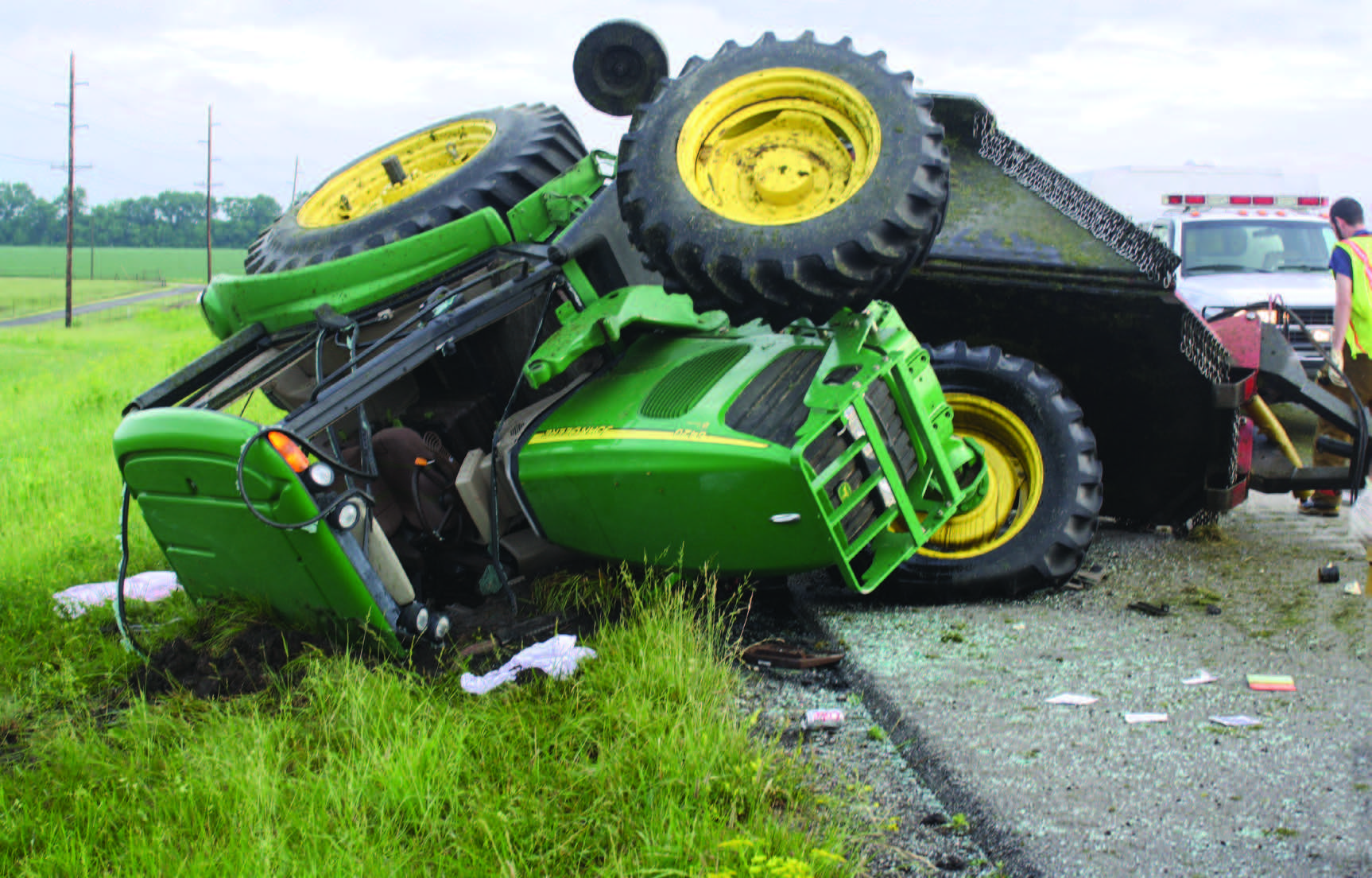
If the plaintiff was awarded damages, he or she can still collect on the judgment unless you file an appeal bond with the court to prevent enforcement of the judgment pending the outcome of the appeal. This process may last a year or more, and may force the case to go to trial again.It can also be very costly.
The Indiana Court of Appeals will review the transcript and exhibits and hear arguments as to any alleged mistakes made by the trial court. If it is determined that the trial court made an error or that some type of misconduct took place, the court of appeals can reverse the trial court’s determination. This may result in having to conduct the entire trial over again. It should be noted that the court of appeals is not empowered to second guess conclusions that were made by the jury as long as there was some evidence, however weak, to support their conclusion.
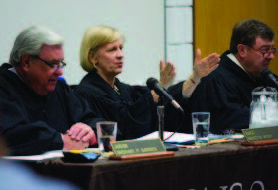
Three court of appeals judges listen to arguments presented by the plaintiff ’s and defendant’s attorneys about alleged mistakes made by the lower circuit court.
If a party does not like a court of appeals decision, that party may have the right to petition the Indiana Supreme Court to review the case. There is no automatic right to have the Indiana Supreme Court review your case. Instead, a party must petition the court to have the case reviewed. The Indiana Supreme Court only takes a limited number of cases per year. If the Indiana Supreme Court does not take your case, the determination made by the court of appeals becomes final.
Conclusion
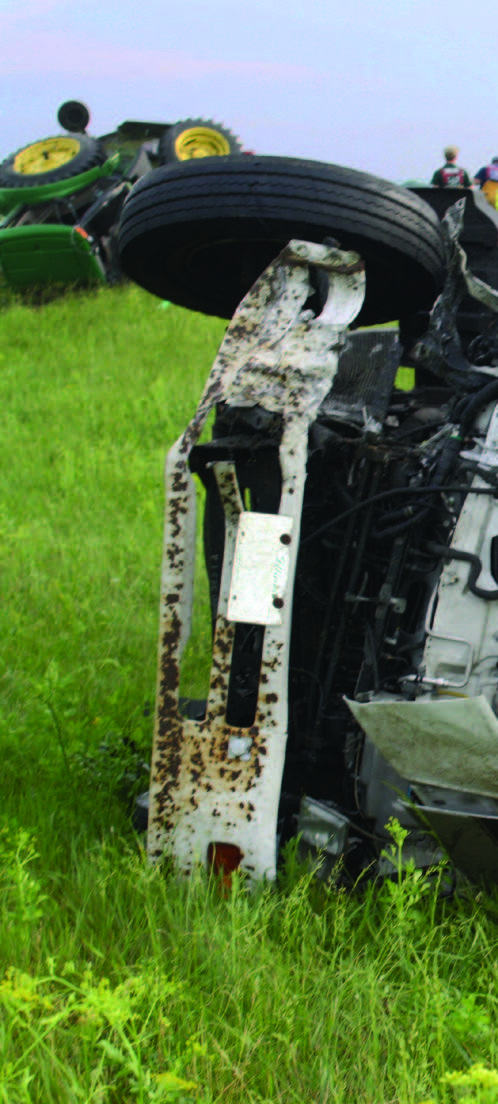
Pictures may fade over time, but memories of serious crashes never do.
Growers operate businesses that require serious and credible investments. Farming is no longer a profession that you can quickly start back up if you lose everything in a lawsuit. If everything went away tomorrow, you would not be able to start from scratch nearly as easily as the previous generation could have.
Growers have to be mindful of how farming and the risks farmers face are different today than they were in years past. Farmers are among the most legally underrepresented group of businesspeople. They often have a general aversion to hiring and paying lawyers. The fact is that lawyers and other professionals can provide invaluable advice that can enable your business and family to succeed in a competitive world.
Today’s farmers need as much, if not more, legal advice than other entrepreneurs working in businesses of similar size and capital. Legal advice on the front end is usually much less expensive and less painful than legal advice on the back end. If you end up being at fault for a crash that involved serious injuries, you stand to lose your investment in your farm, land, and equipment — everything you worked a lifetime for. Why run the risk losing the fruits of all that hard work? Just as you might have wellness visits with your doctor, establish a relationship with a lawyer before you ever need legal assistance. Seek legal advice before you have a problem so you can insulate yourself and your assets from potential liability.
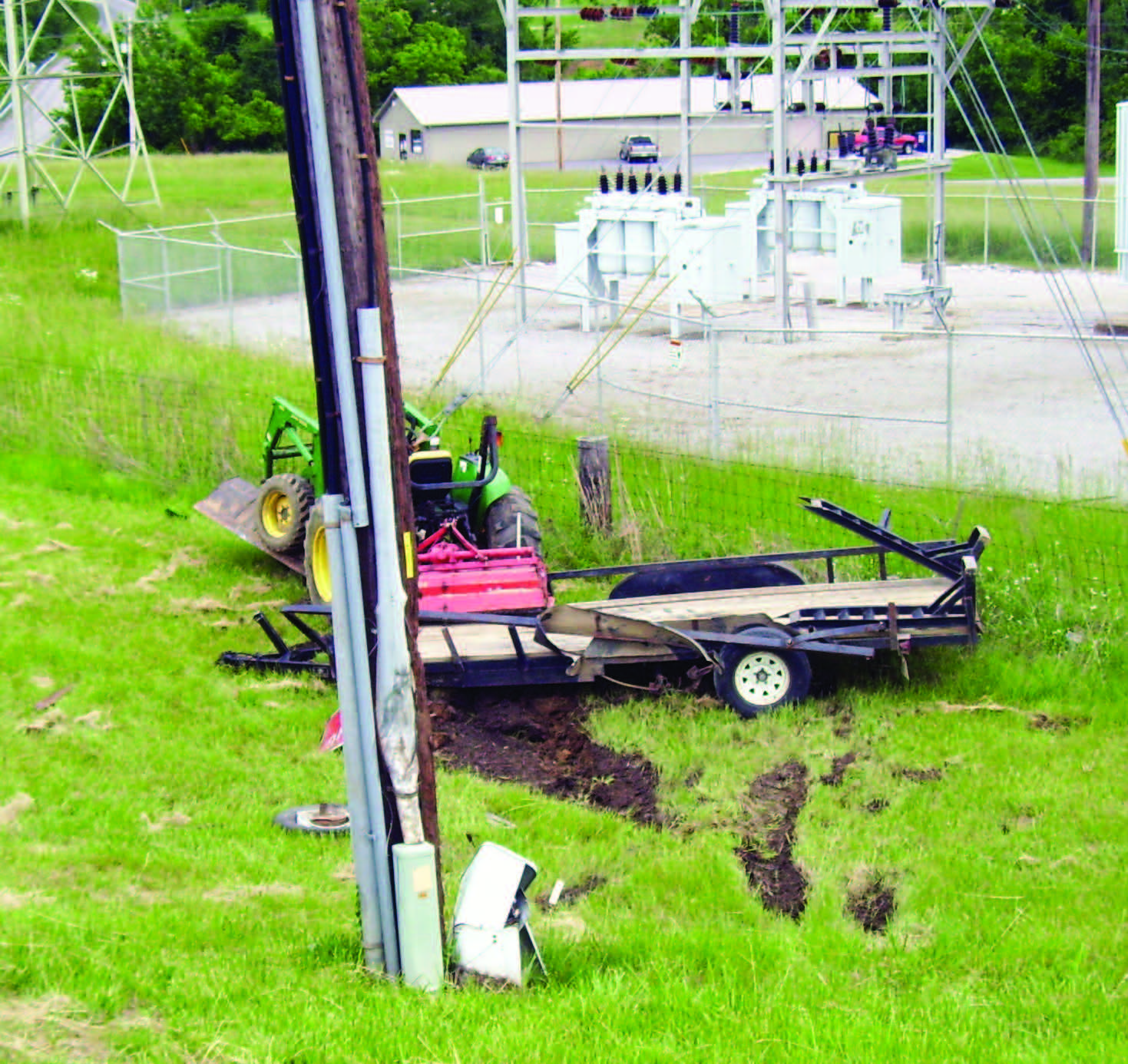
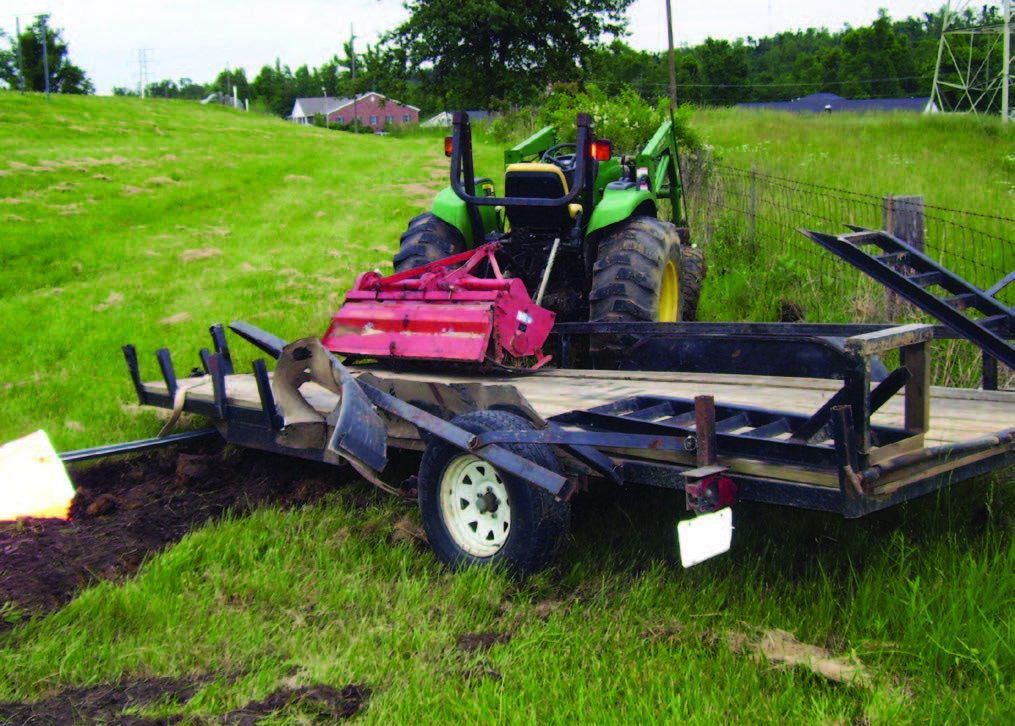
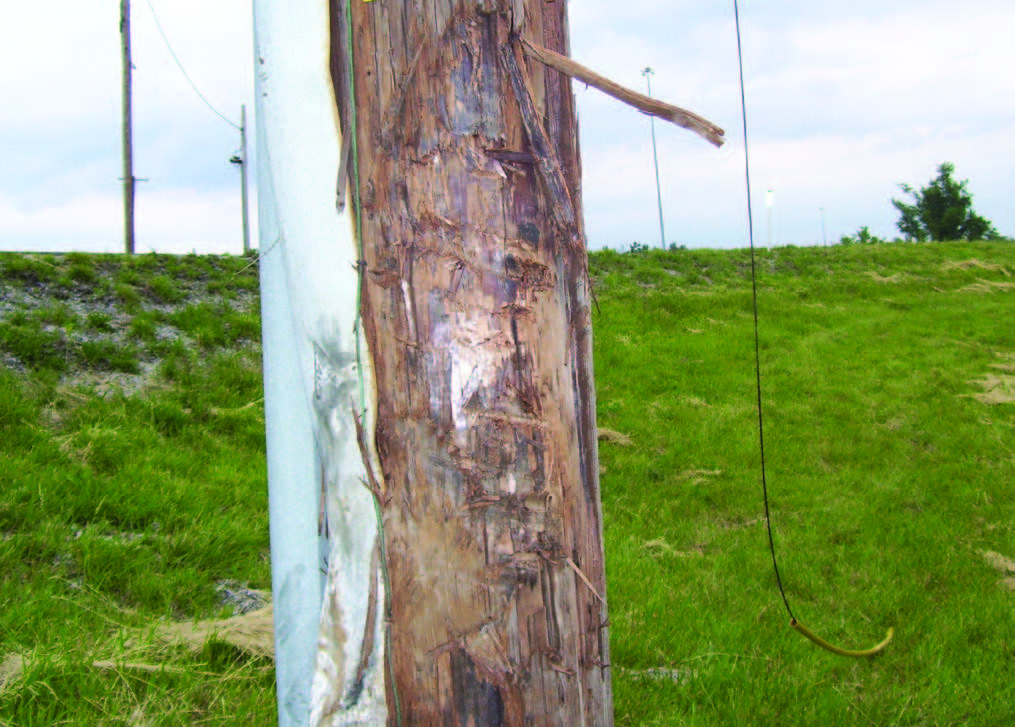
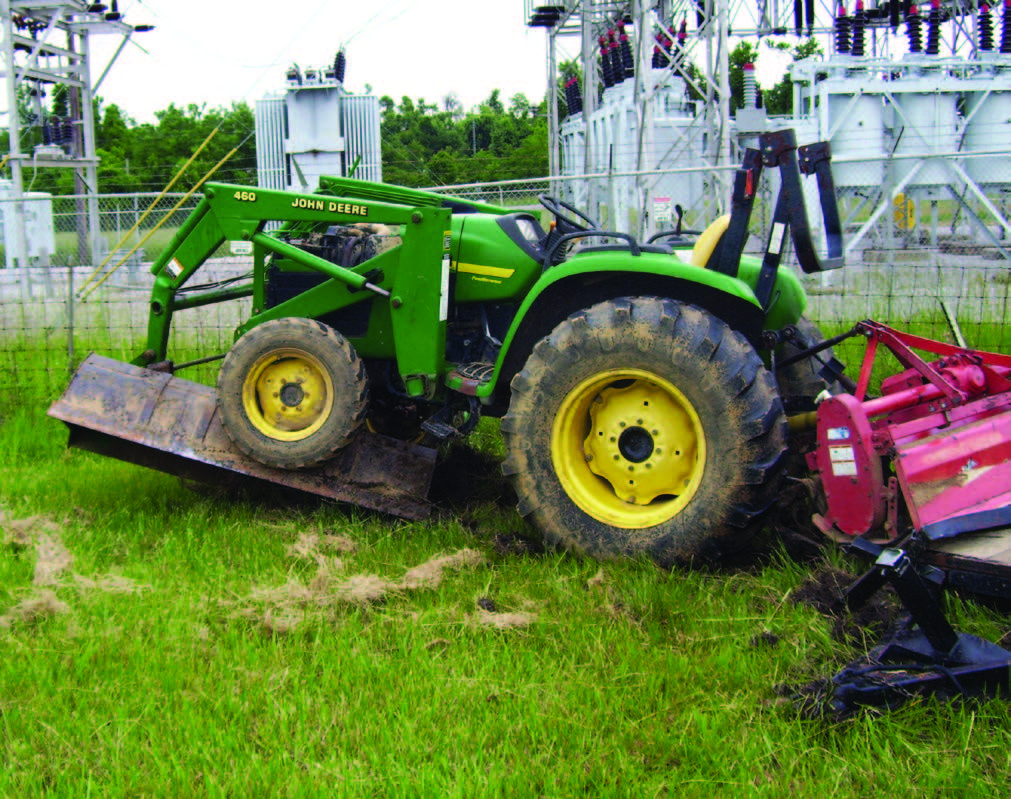
Acknowledgments
Cover photo and photo on bottom of page 5 used by permission of Michael Heinz, Lafayette Journal and Courier. Photo on page 11 used by permission of Ron Melancon. Thanks to Dawn Minns for graphic design.
Thanks also to those who offered constructive comments during the development of this publication:
Amy Cornell, Indiana State Department of Agriculture
Michael Olexa, Attorney, University of Florida
Steve Pritchard, Daseke Insurance Agency
Herbert Ringel, Indiana Grower
George Saxton, Office of Indiana State Chemist
Justin Schneider, Attorney, Indiana Farm Bureau
Jamie Southard, Effingham Equity
Michael Thornburg, Attorney, Indiana Farm Bureau

A special thanks to the Indiana Agricultural Law Foundation for partially funding this publication.
“Defending our growing industry”
The Indiana Agricultural Law Foundation, Inc. is a 501(c)(3) charitable organization dedicated to supporting legal issues affecting agriculture. For more information, call (317) 692-7840. All written inquiries can be mailed to: Indiana Agricultural Law Foundation, Inc., 225 South East St., P.O. Box 1290, Indianapolis, IN 46206-1290.
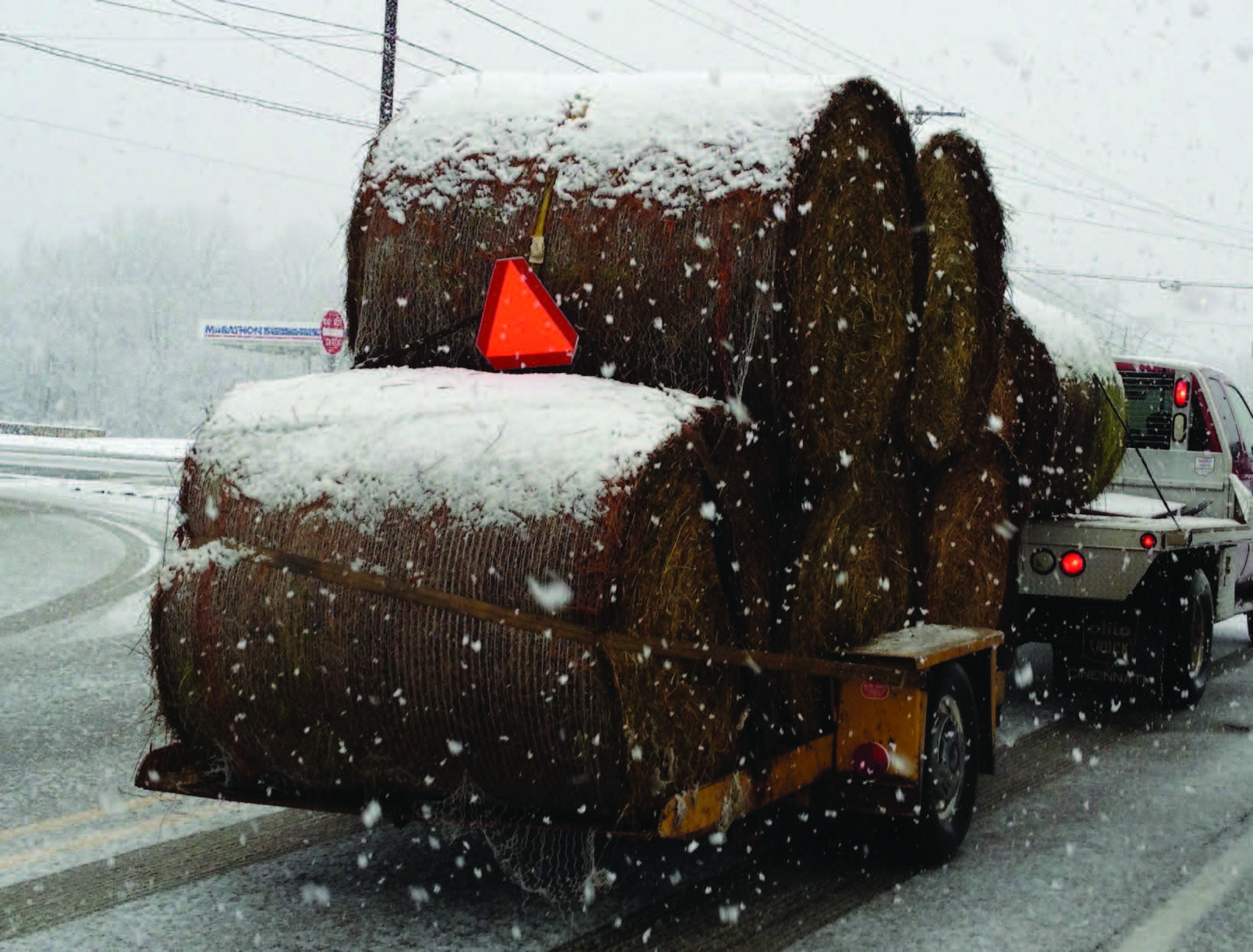
Disclaimer
This publication is intended for educational purposes only. The authors’ views have not been approved by any government agency or business. The publication is distributed with the understanding that the authors are not rendering legal or other professional advice to the reader, and that the information contained herein should not be regarded or relied upon as a substitute for professional consultation. The use of information contained herein constitutes an agreement to hold the authors harmless for liability, damage, or expense incurred as a result of reference to or reliance upon the information provided. Mention of a proprietary product or service does not constitute an endorsement by the authors or their employers. Descriptions of specific situations are included only as hypothetical case studies to assist readers of this publication, and are not intended to represent any actual person, business entity or situation.
Appendix
This is a sample of a form given to juries to assign percentages of fault in a lawsuit.
Verdict Instruction
The Court is submitting to you forms of possible verdicts you may return in this case. When you have reached your verdict, the foreperson should complete, sign, and date the verdict form. Bring all verdict forms with you when you return to court.
Step 1.
If you find that the Defendant, Farmer Jones, is not at fault, or that the Plaintiff, Nancy Driver, alleged injuries and damages were not proximately caused by the Defendant, you should proceed to Verdict Form “A,” and the form of your verdict should be as follows:
“We, the Jury, find that the Defendant, Farmer Jones, was not at fault; or that the Plaintiff, Nancy Driver, fault exceeds 50% of the total fault; or that the Defendant’s fault was not a proximate cause of the Plaintiff’s injuries and damages. Therefore, we find for the Defendant and against the Plaintiff.”
However, if you find that the Defendant was at fault, move to Step 2.
Step 2.
If you find the Defendant was at fault, you should assign fault as follows:
Percentage of fault assigned to Plaintiff, Nancy Driver _____%
Percentage of fault assigned to Defendant, Farmer Jones _____% = 100%
If the percentage of fault you assigned to the Plaintiff was more than fifty percent (50%) of the total fault that proximately caused the Plaintiff’s injuries, you should proceed to Verdict Form “A,” and the form of your verdict should be:
“We, the Jury, find that the Defendant, Farmer Jones, was not at fault; or that the Plaintiff, Nancy Driver, fault exceeds 50% of the total fault; or that the Defendant’s fault was not a proximate cause of the Plaintiff’s injuries and damages. Therefore, we find for the Defendant and against the Plaintiff on the Plaintiff’s Complaint.”
Step 3.
If the percentage of fault you assigned to the Plaintiff in Step 2 was fifty percent (50%) or less of the total fault that proximately caused the Plaintiff’s injuries, and you assigned any percentage of fault to the Defendant, you are to find the Defendant liable to the Plaintiff. You must determine the Plaintiff’s total damages, and multiply the Plaintiff’s total damages by the Defendant’s percentage of fault to arrive at your verdict. You should proceed to Verdict Form “B,” and the form of your verdict should be:
“We, the Jury, find for the Plaintiff and we assess the percentages of fault as follows:
Plaintiff, Nancy Driver _____ %
Defendant, Farmer Jones _____ %
TOTAL: = 100%
We further find that the total amount of damages which the Plaintiff is entitled to recover, disregarding fault, is the sum of $______________.
We, the Jury, now find for the Plaintiff, and against the Defendant, in the sum of:
Total Damages $__________
Defendant’s Percentage of Fault x__________%
Plaintiff’s Verdict Amount = $__________
VERDICT FORM “A” (VERDICT FOR DEFENDANT)
“We, the Jury, find that the Defendant, Farmer Jones, was not at fault; or that the Plaintiff, Nancy Driver,
fault exceeds fifty percent (50%) of the total fault; or that the Defendant’s fault was not a proximate cause
of the Plaintiff’s injuries and damages. Therefore, we find for the Defendant and against the Plaintiff.”
Dated:__________________ ____________________________________
Foreperson
VERDICT FORM “B” (VERDICT FOR PLAINTIFF)
“We, the Jury, find for the Plaintiff and we assess the percentages of fault as follows:
Plaintiff, Nancy Driver _____ %
Defendant, Farmer Jones _____ %
TOTAL: = 100%
We further find that the total amount of damages which the Plaintiff is entitled to recover, disregarding fault, is the sum of $____________.
We, the Jury, now find for the Plaintiff, and against the Defendant, in the sum of:
Total Damages $__________
Defendant’s Percentage of Fault x__________%
Plaintiff’s Verdict Amount = $__________
Dated:__________________ ____________________________________
Foreperson
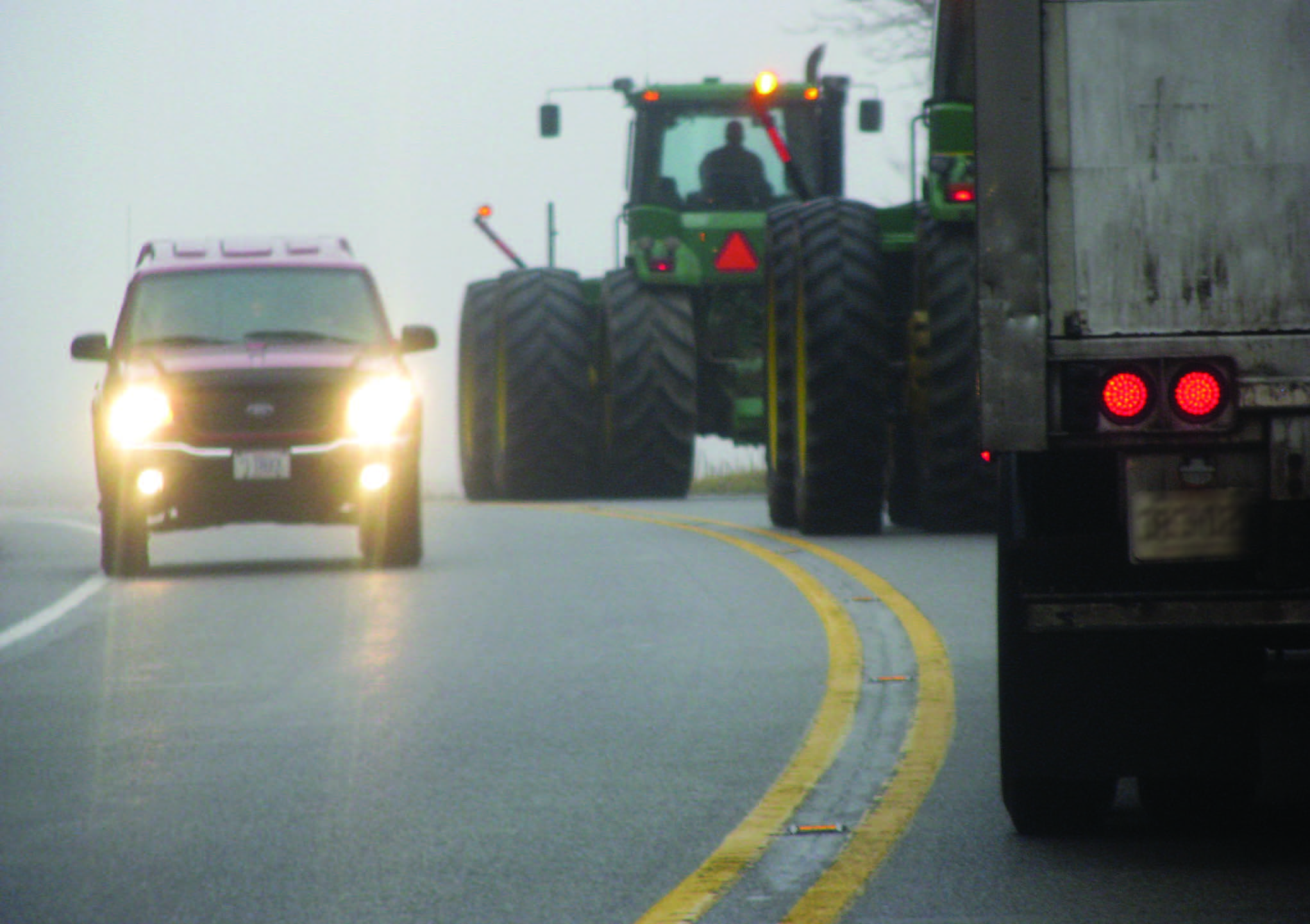
Purdue Extension • The Education Store
www.the-education-store.com
It is the policy of the Purdue University Cooperative Extension Service that all persons have equal opportunity and access to its educational programs, services, activities, and facilities without regard to race, religion, color, sex, age, national origin or ancestry, marital status, parental status, sexual orientation, disability or status as a veteran. Purdue University is an Affirmative Action institution. This material may be available in alternative formats.
